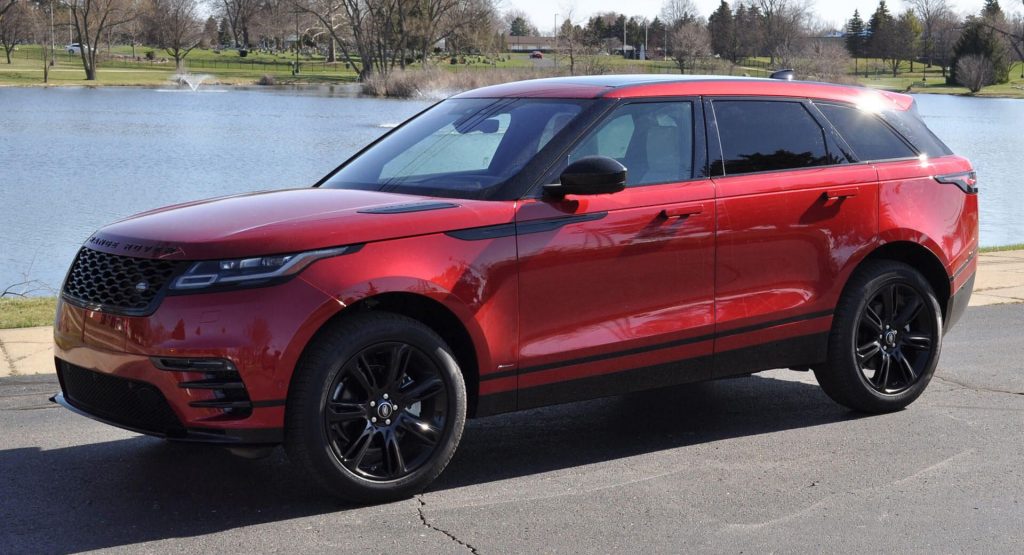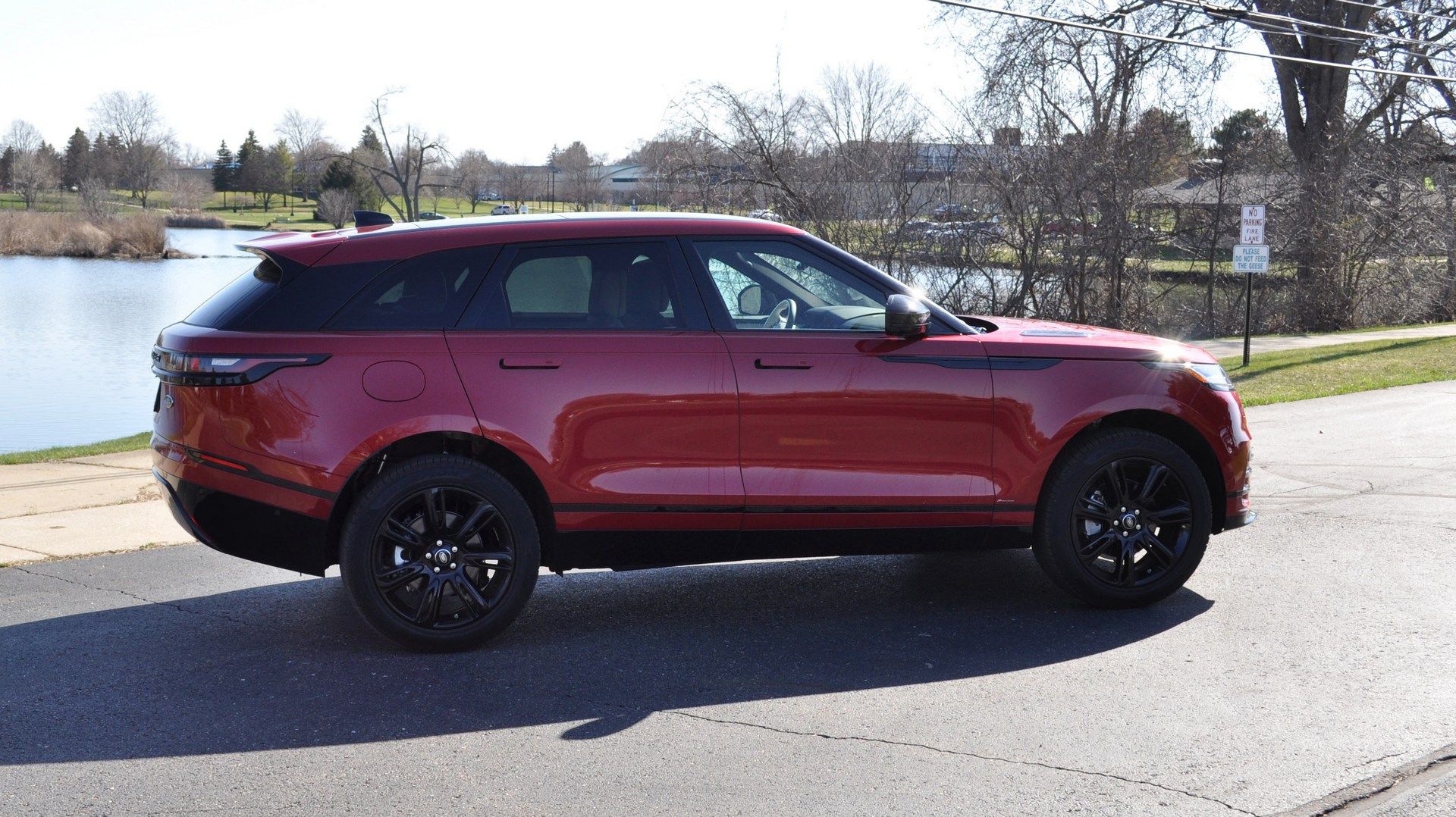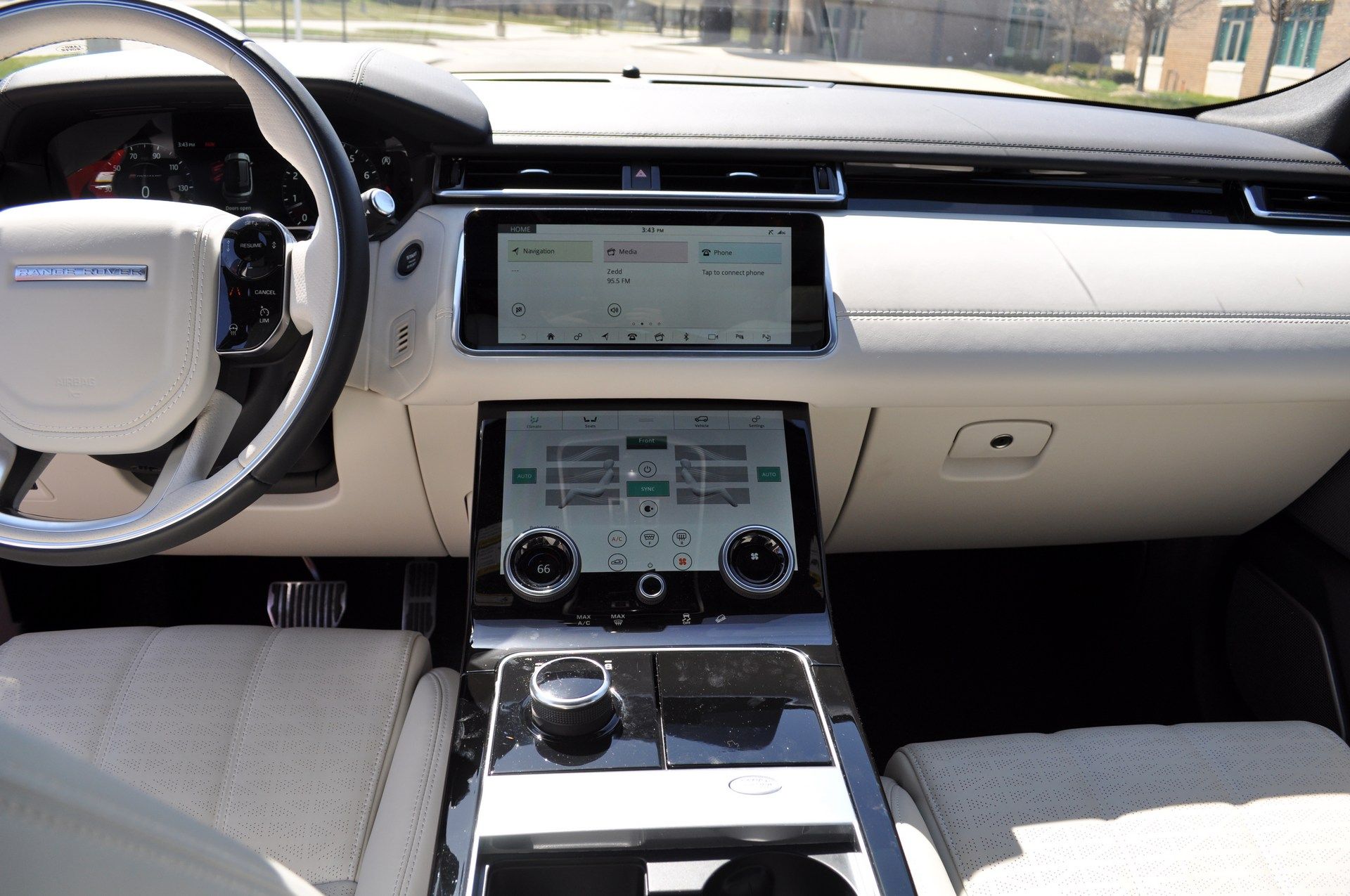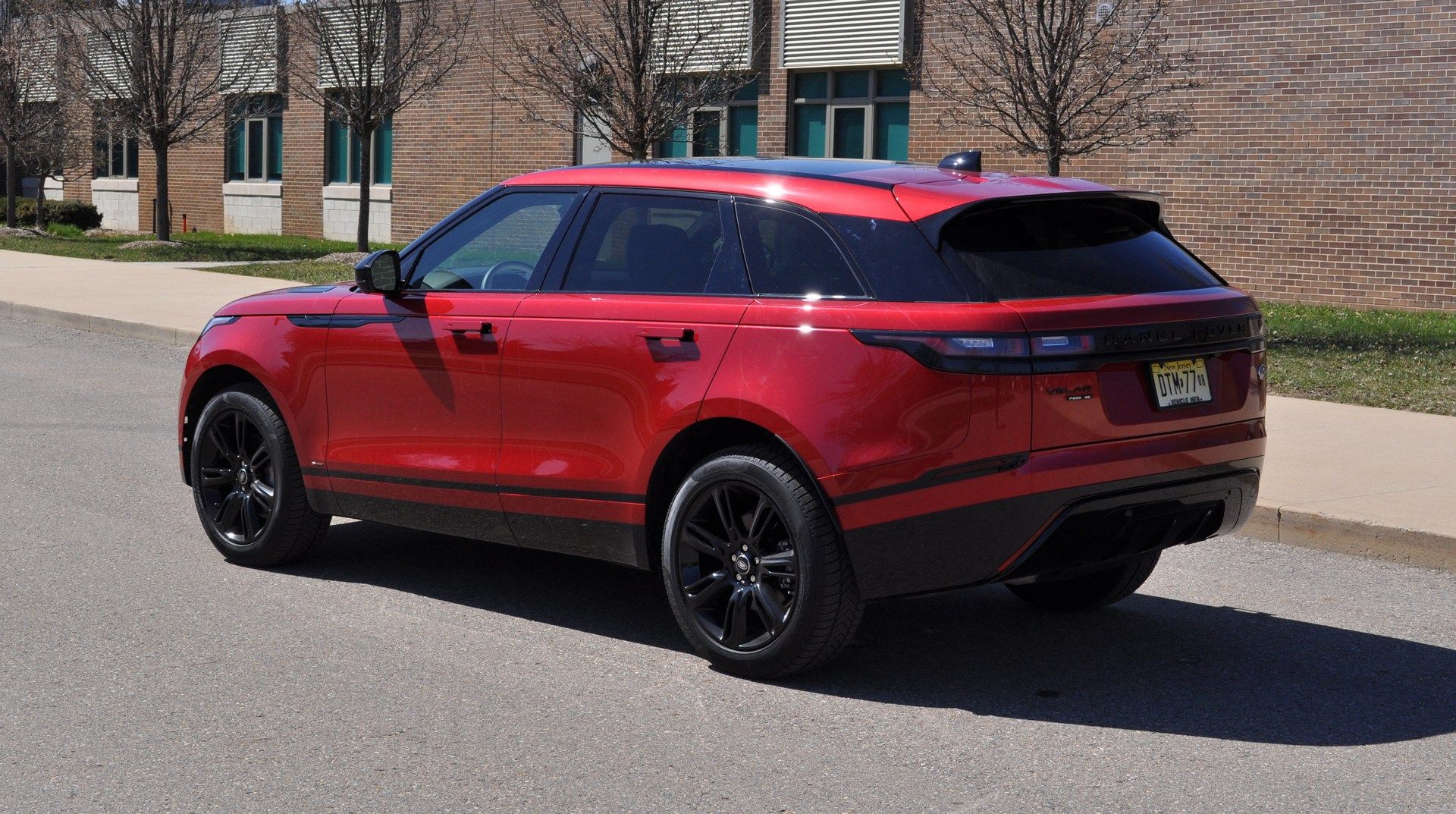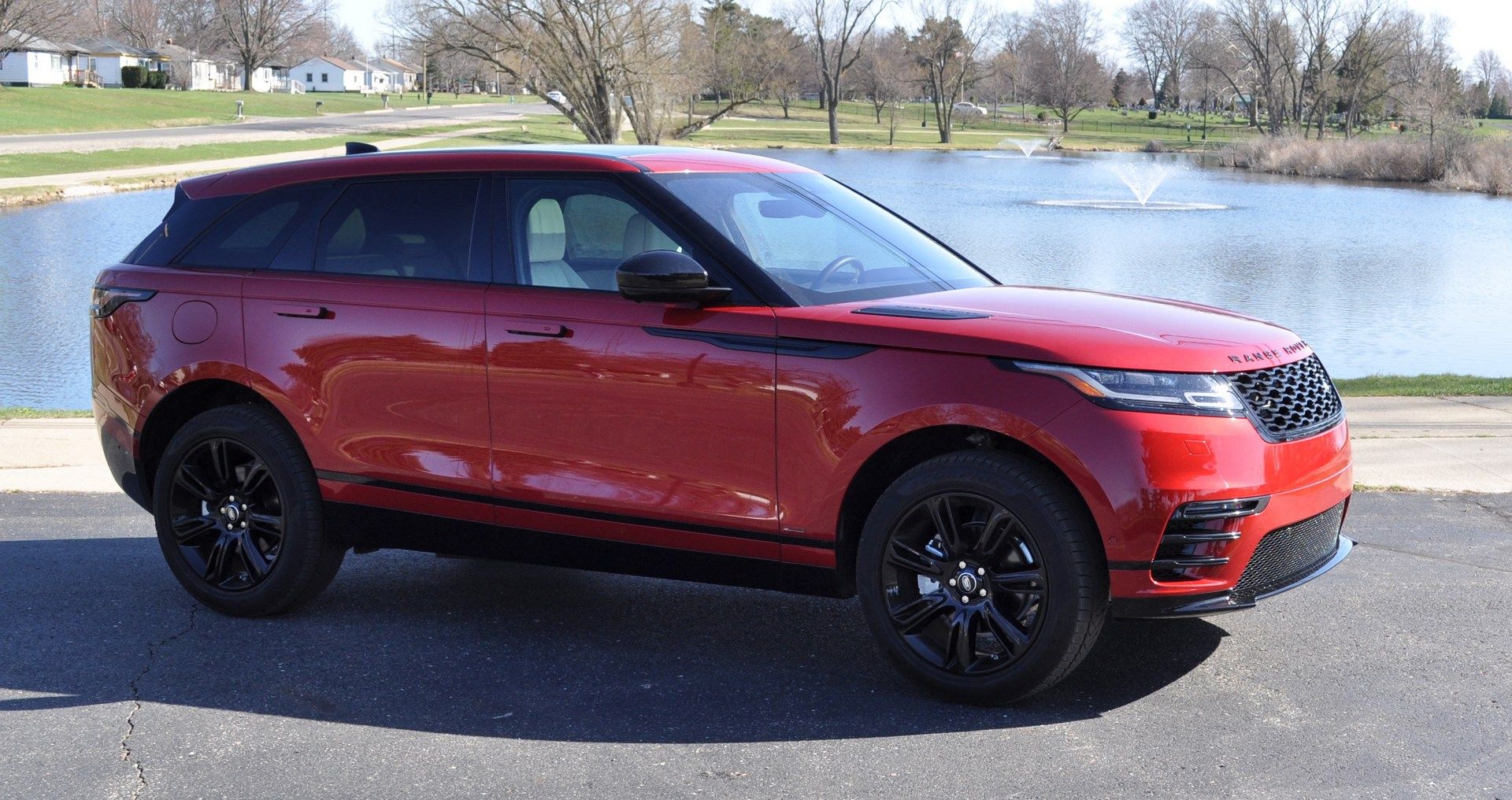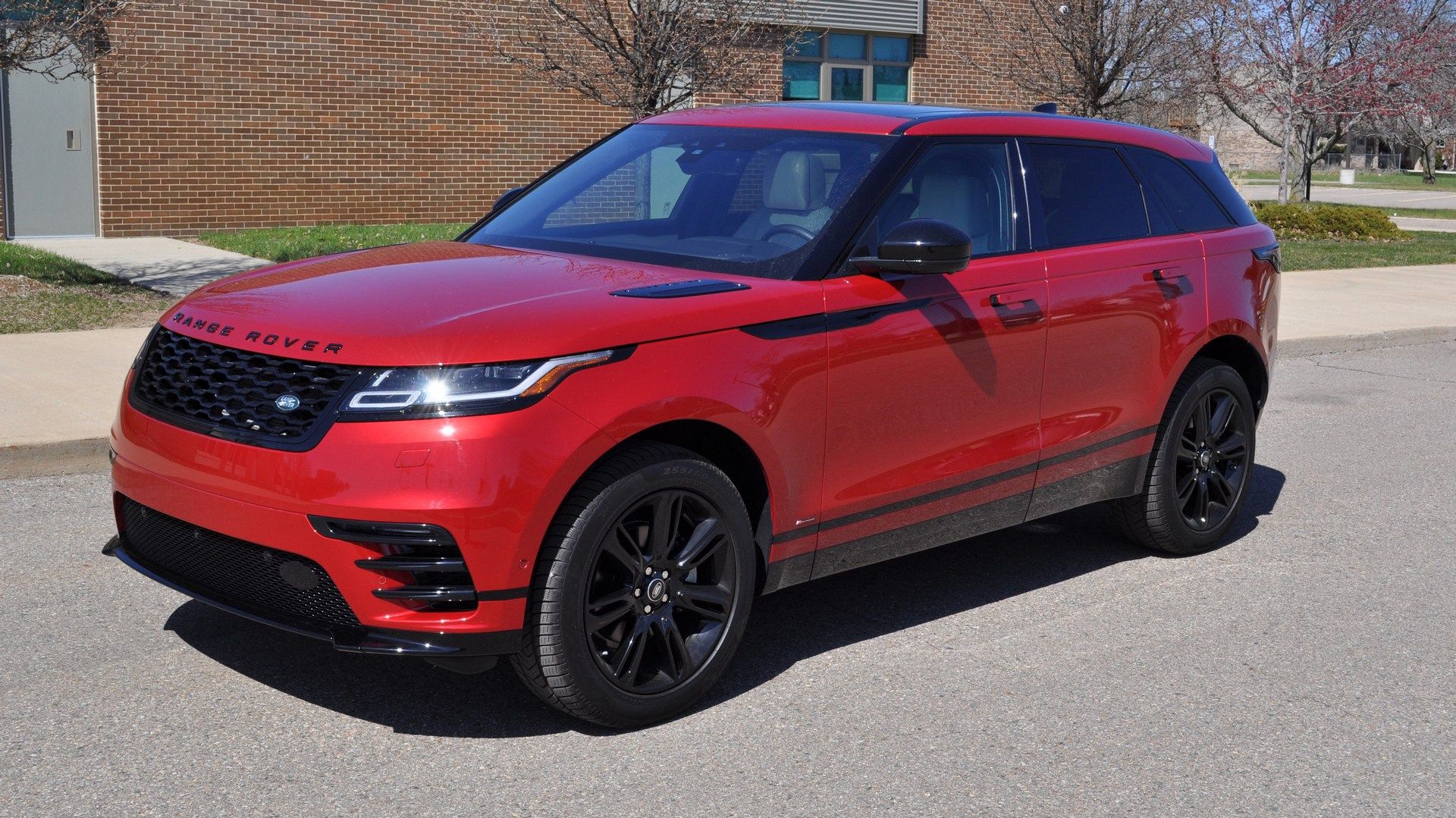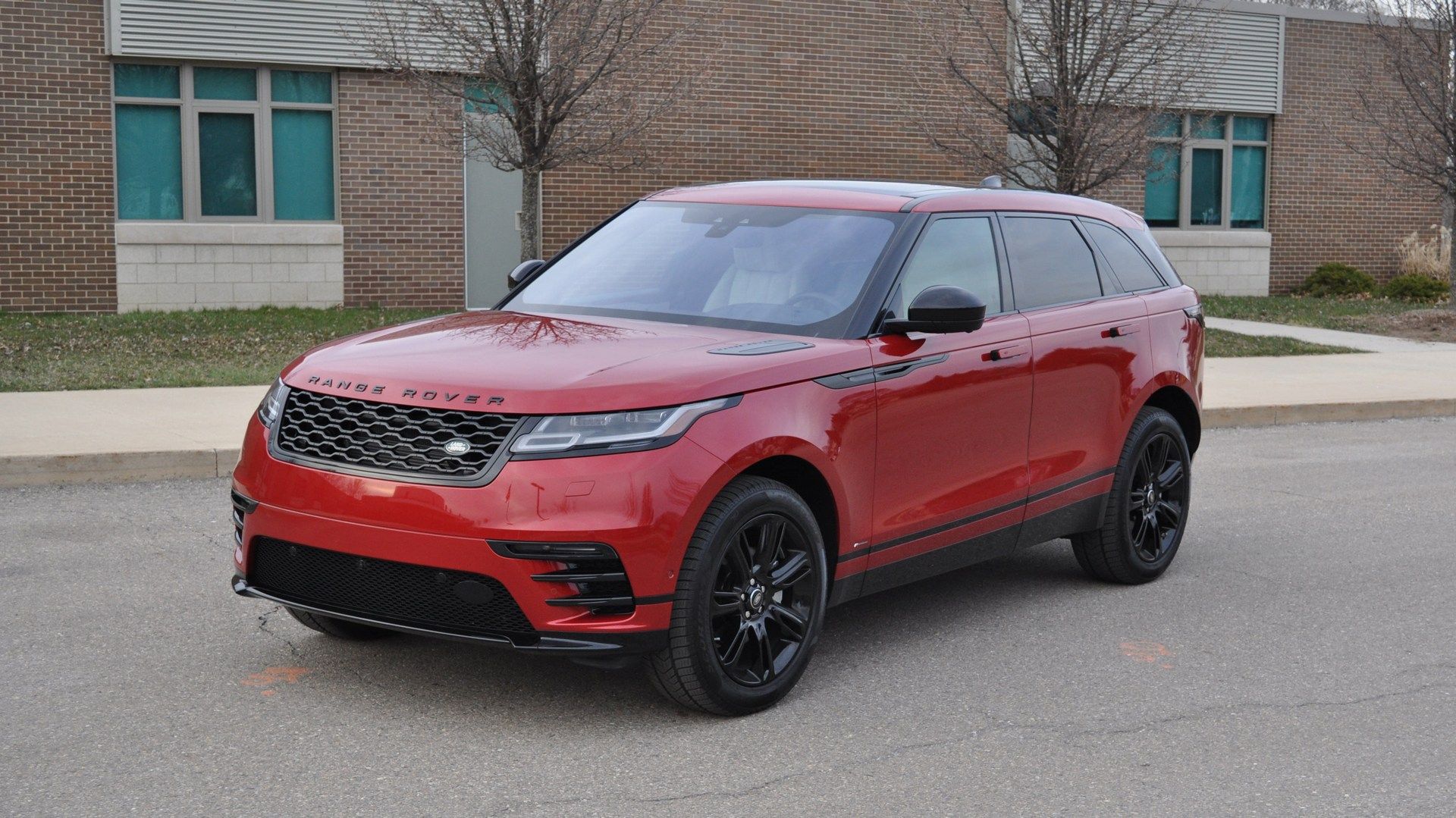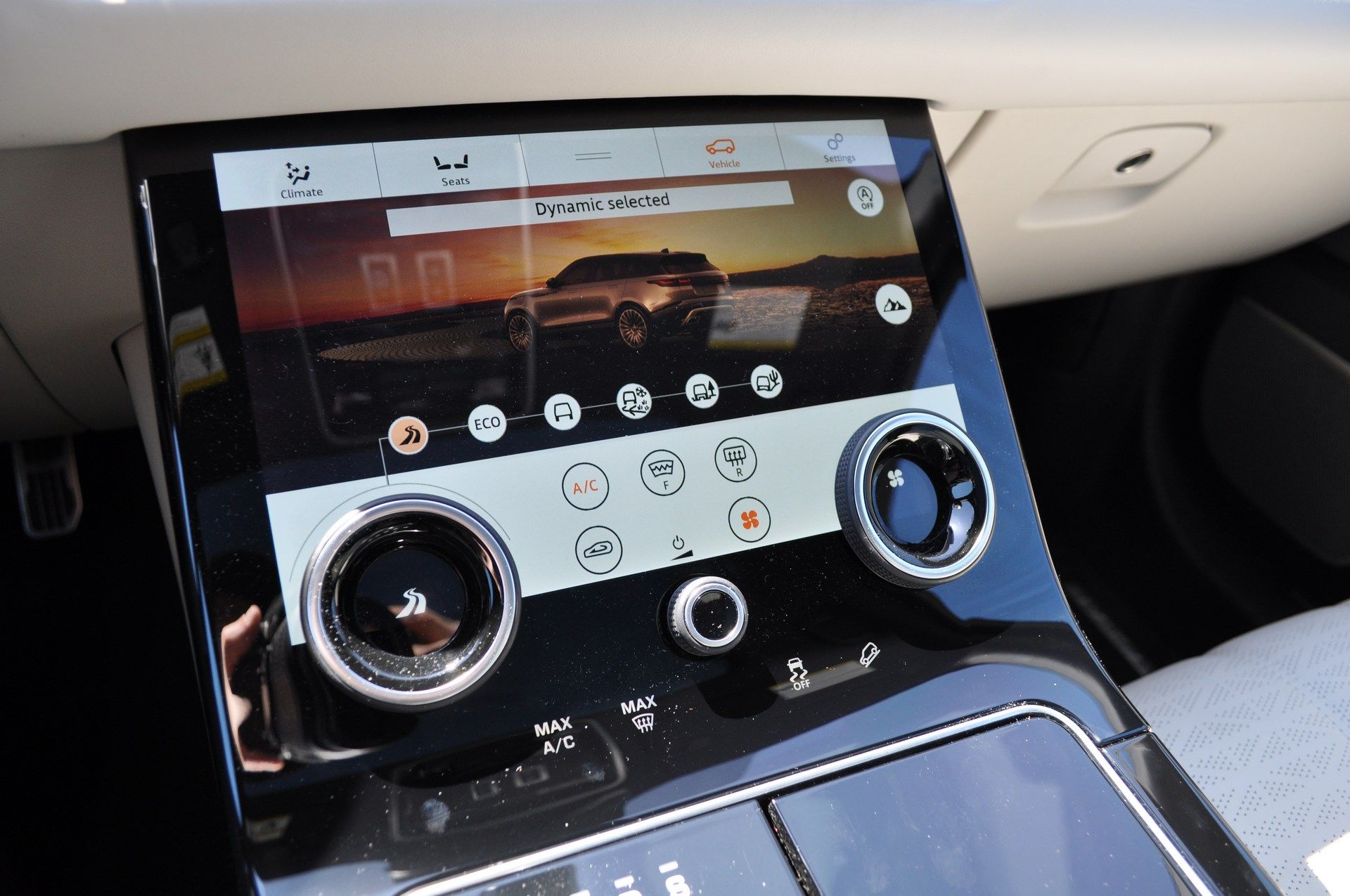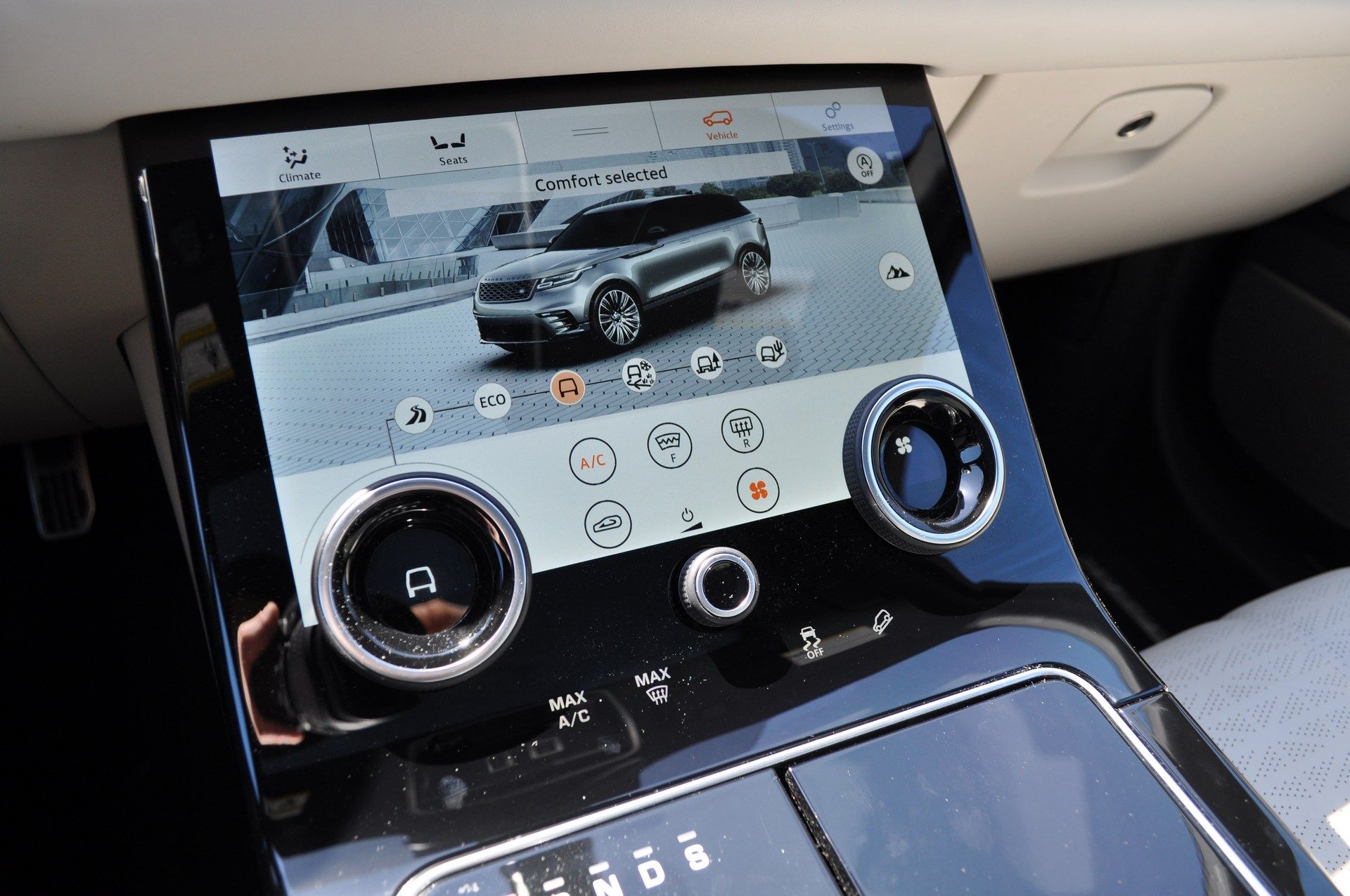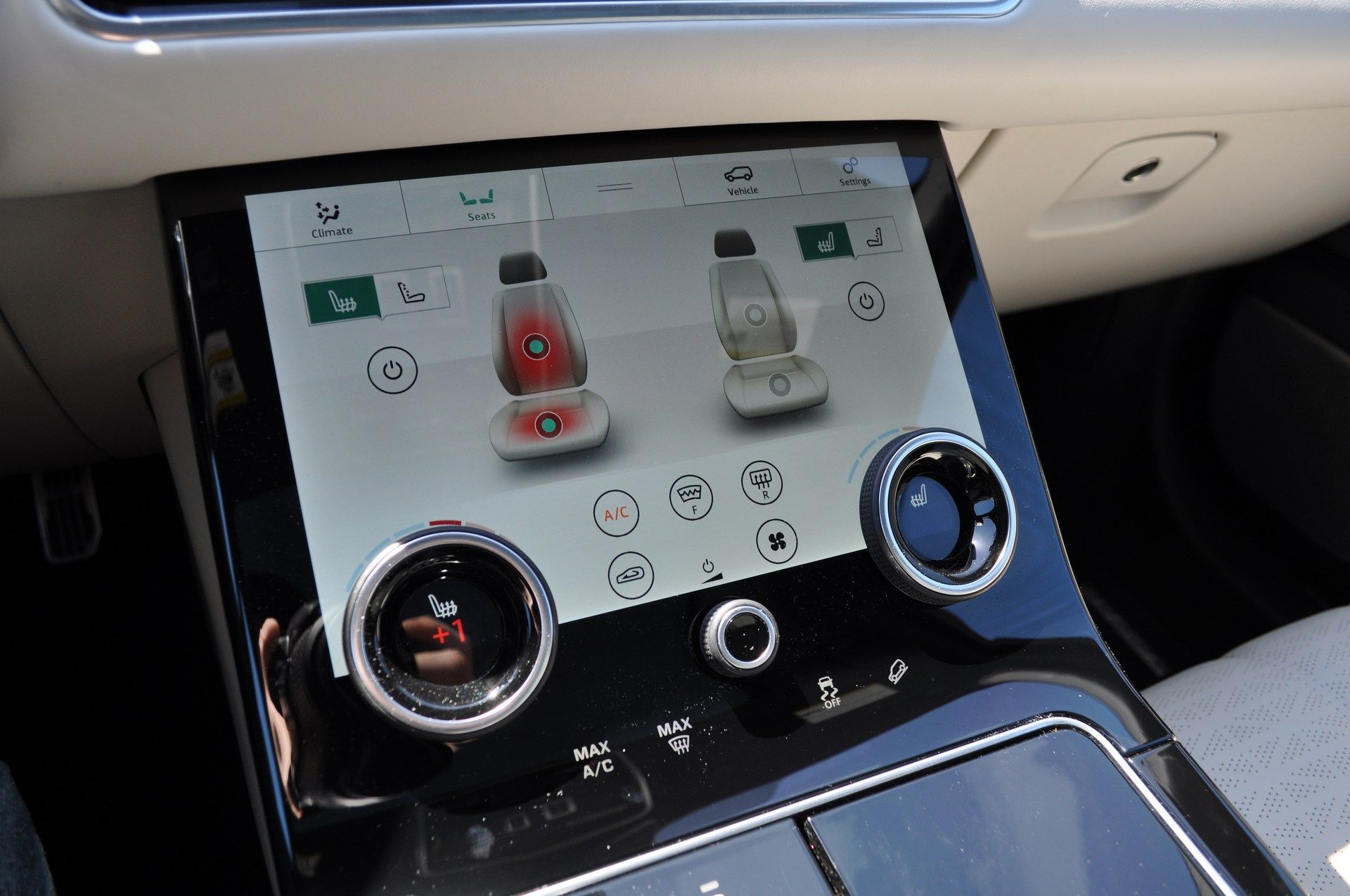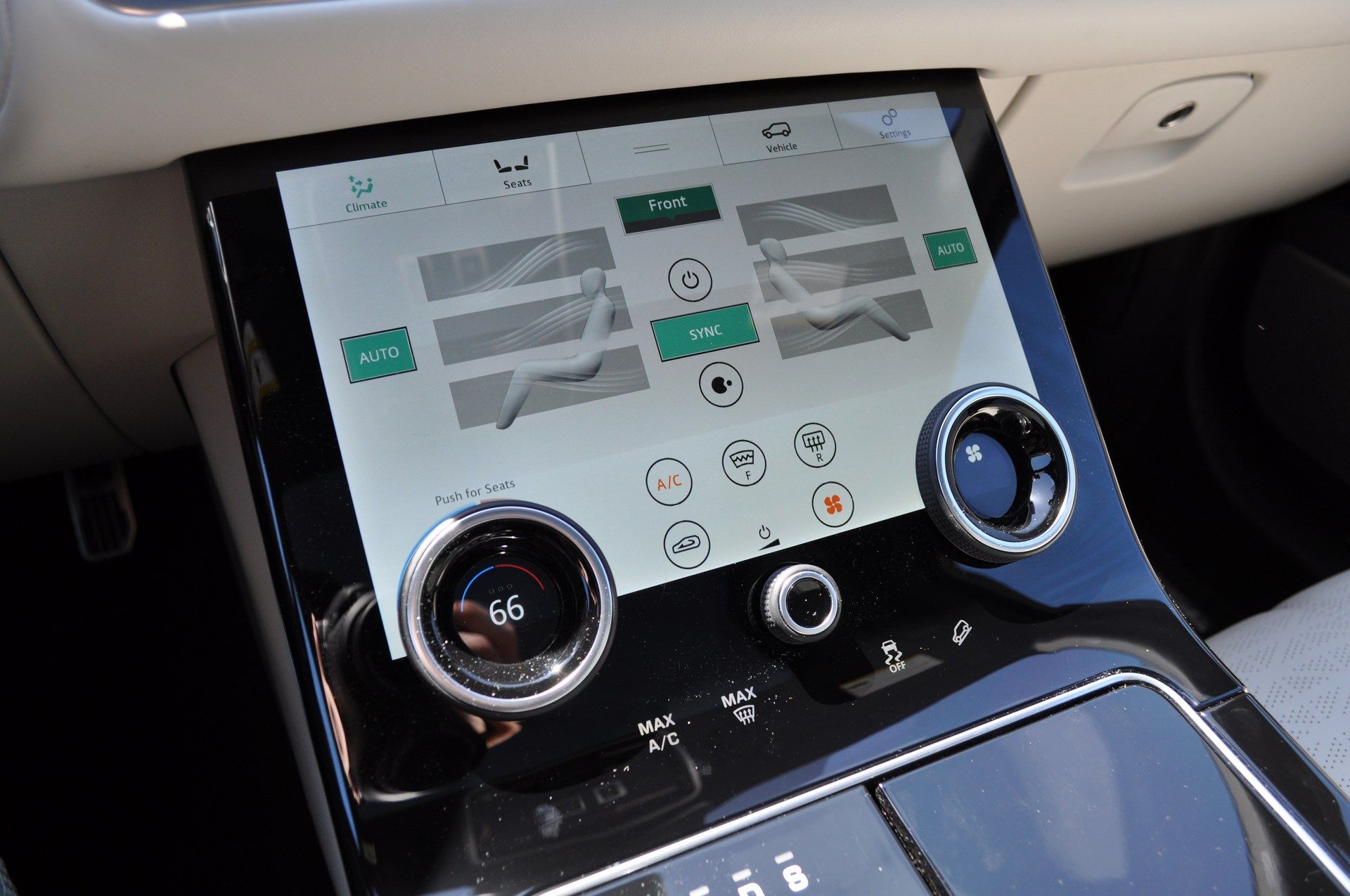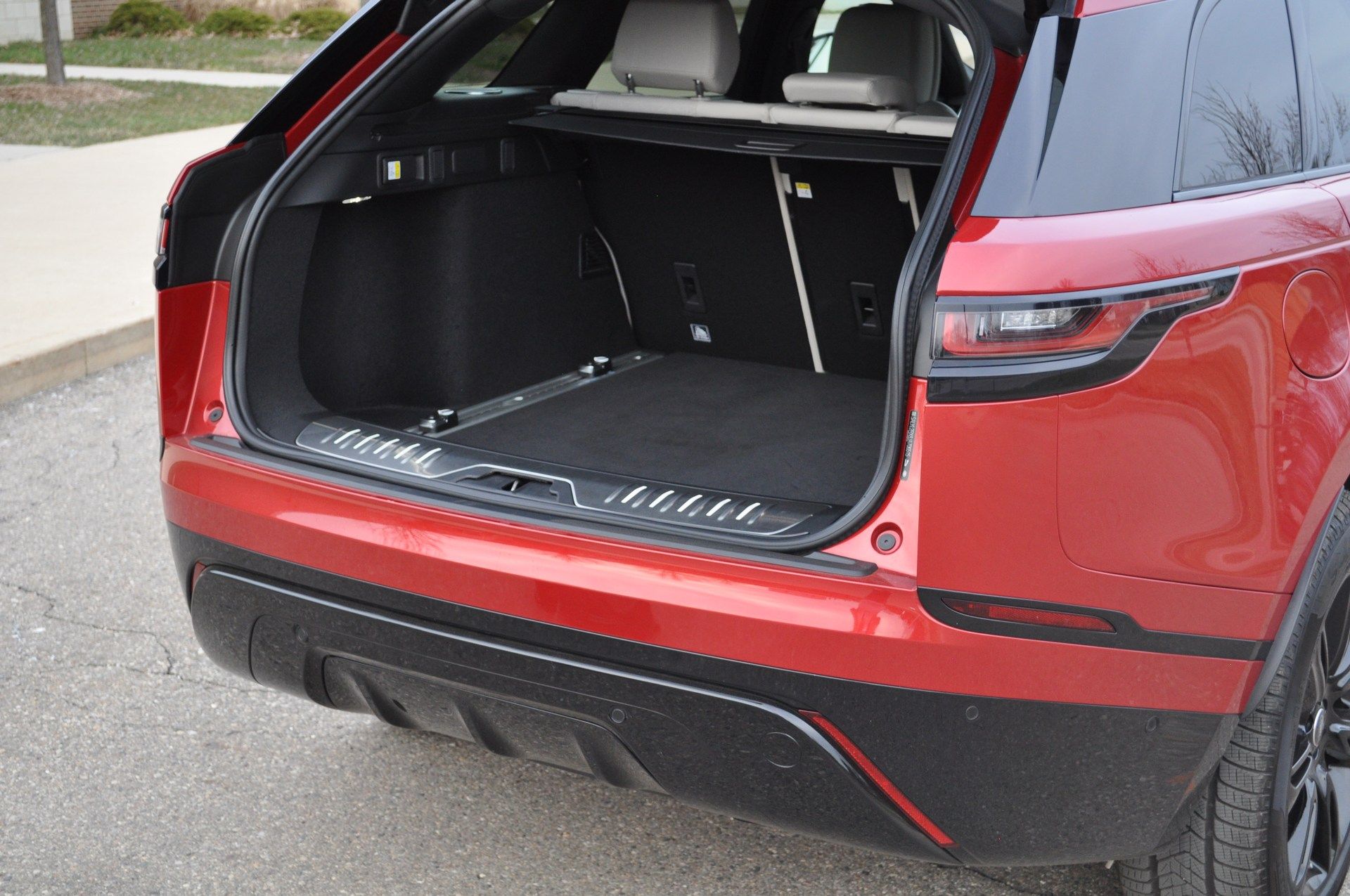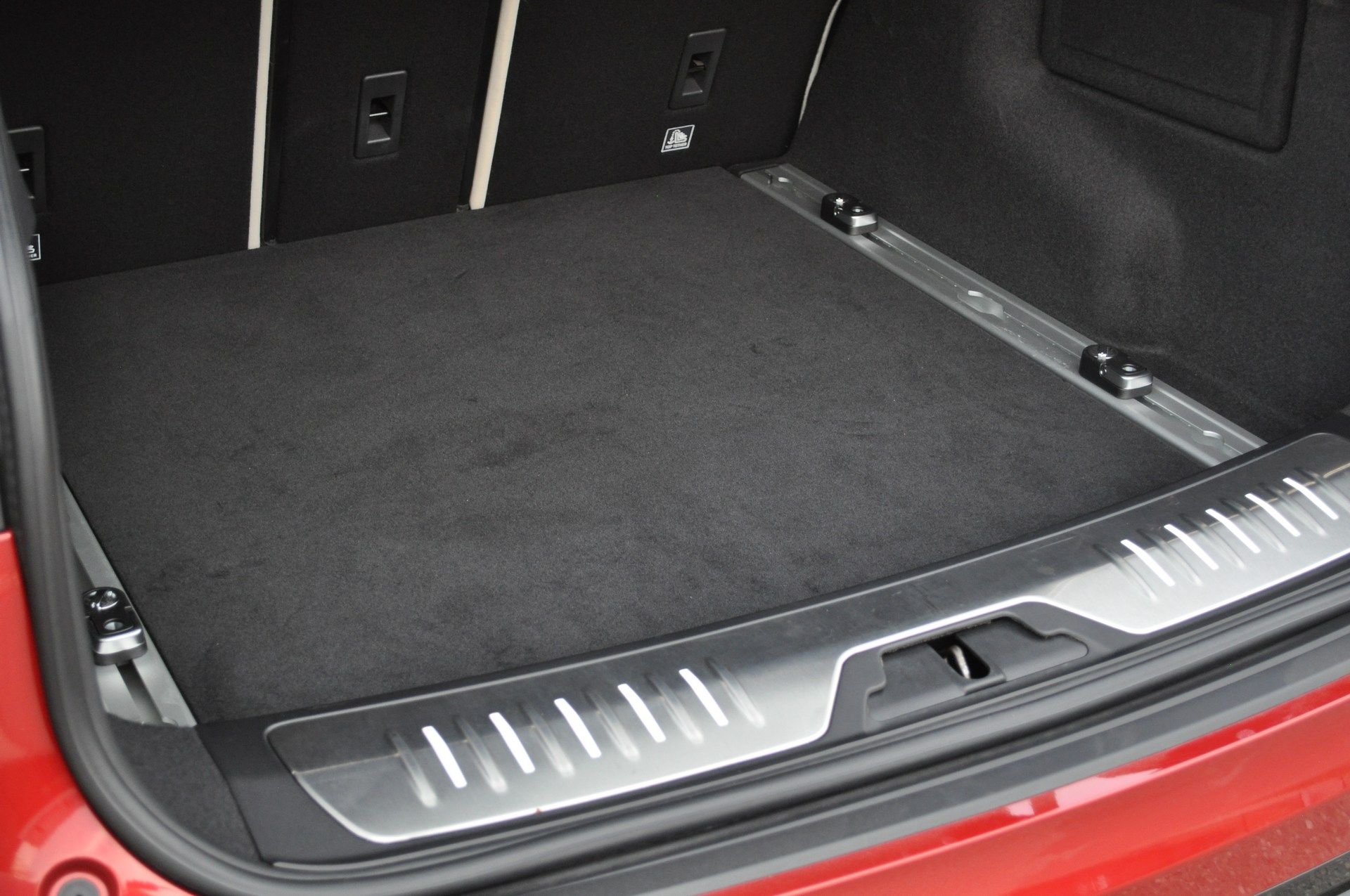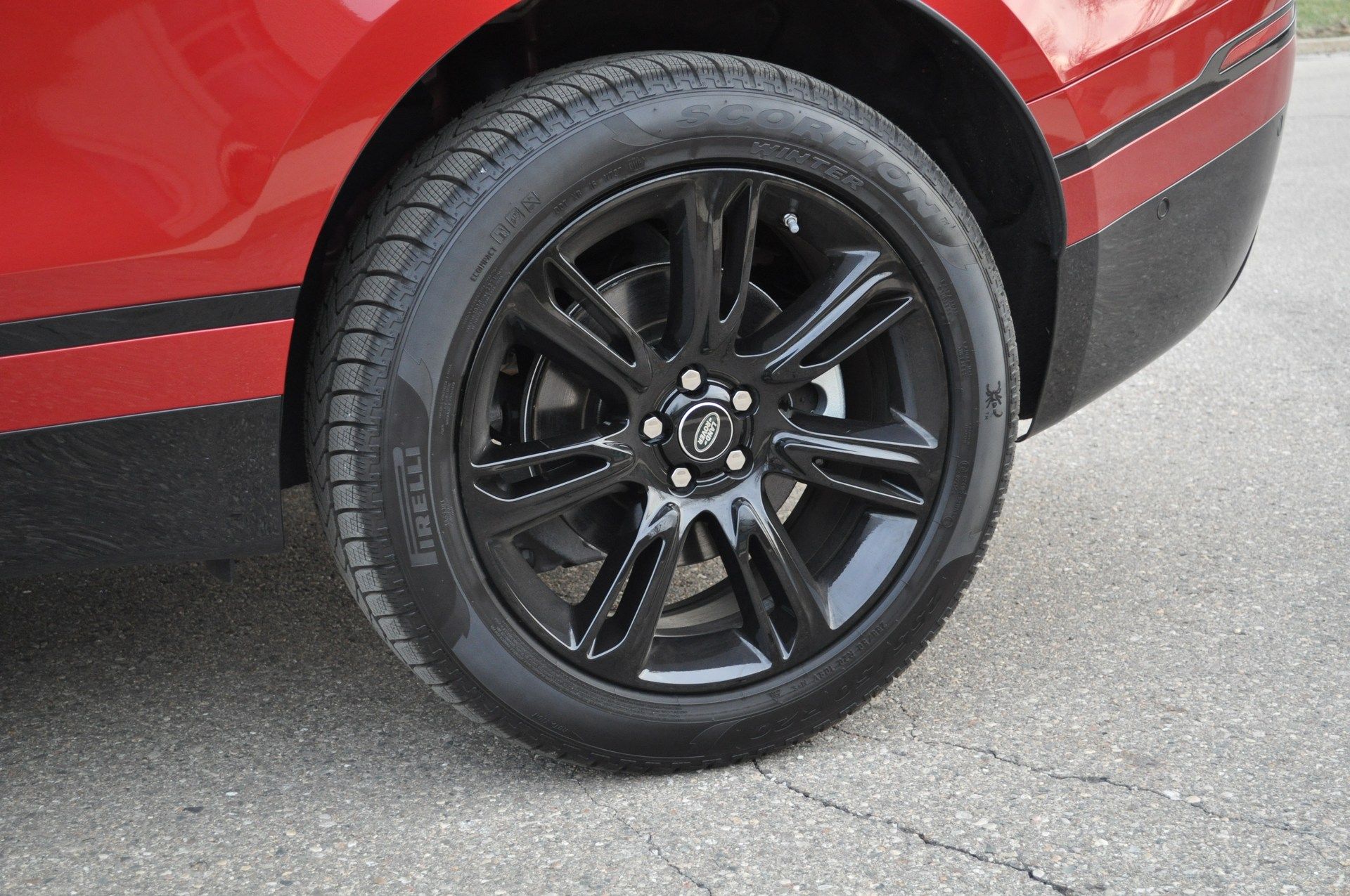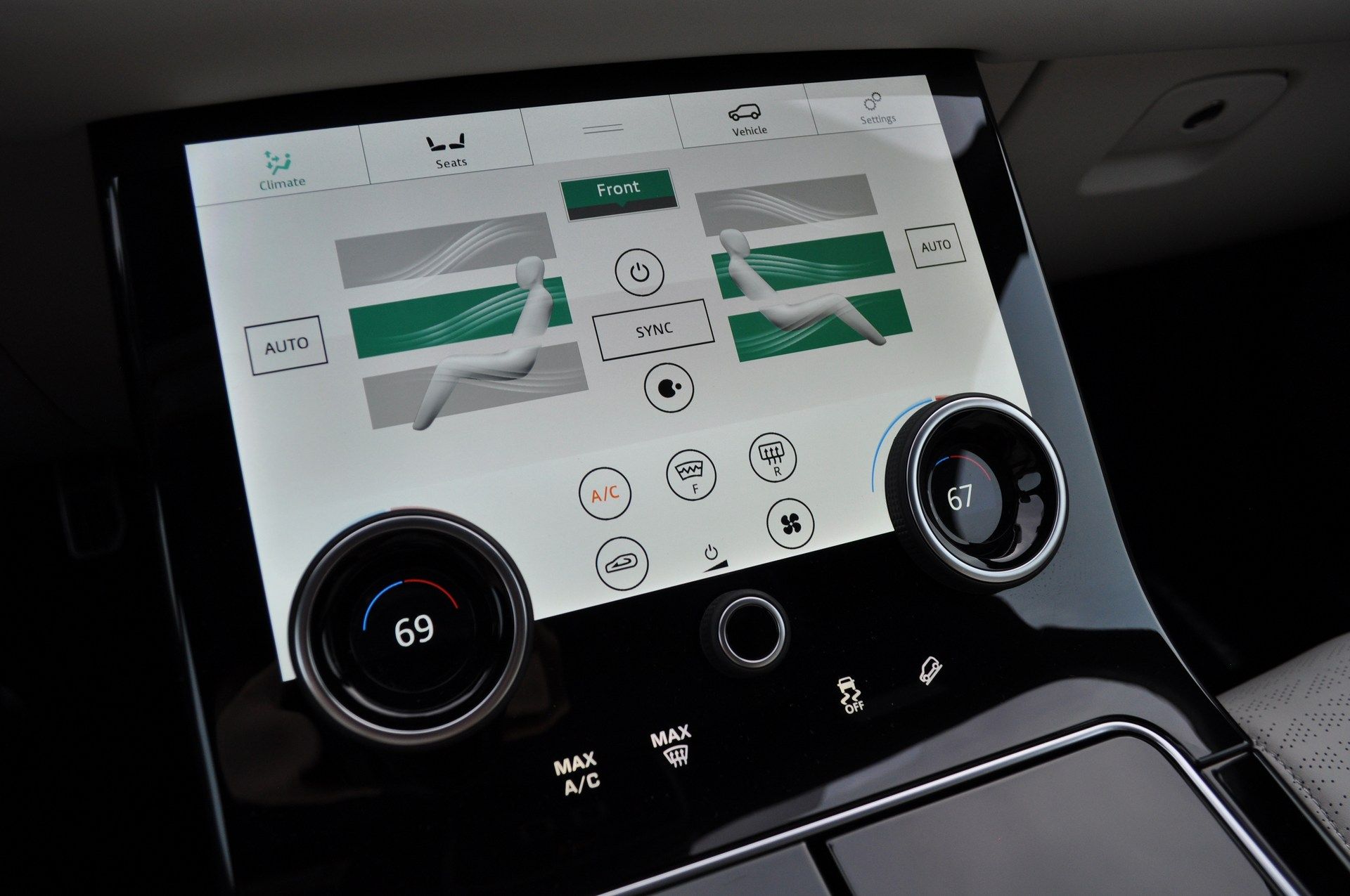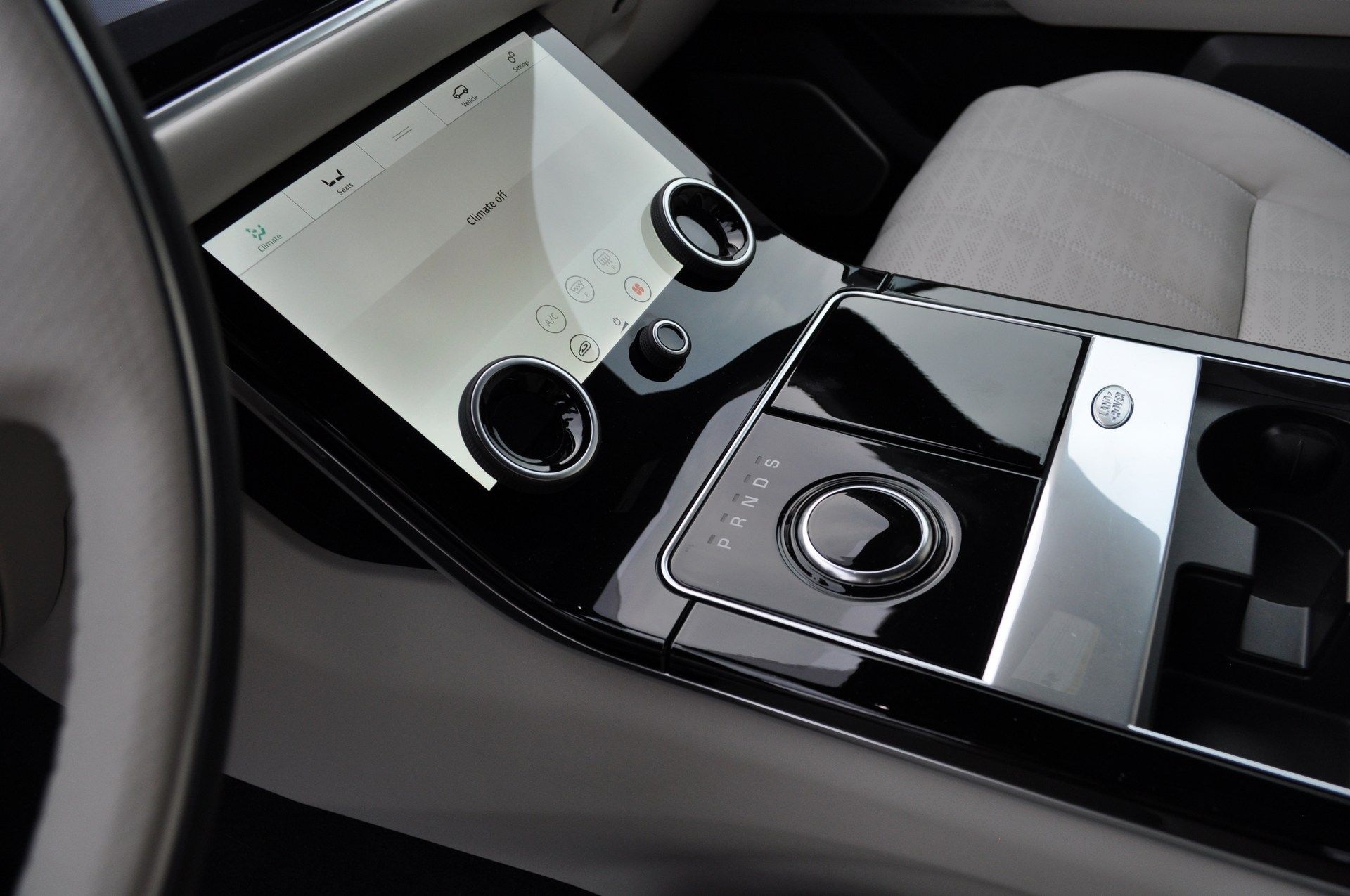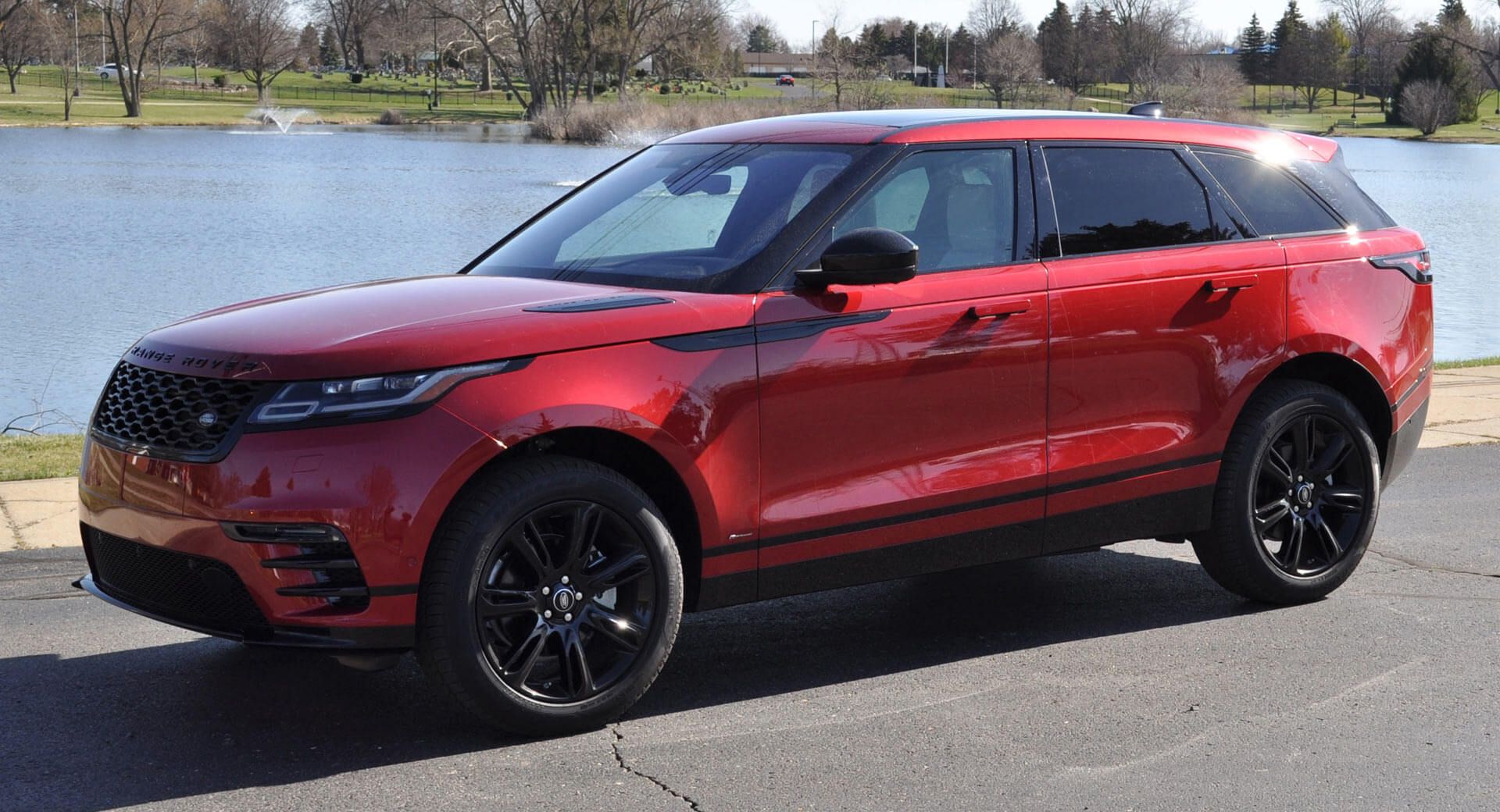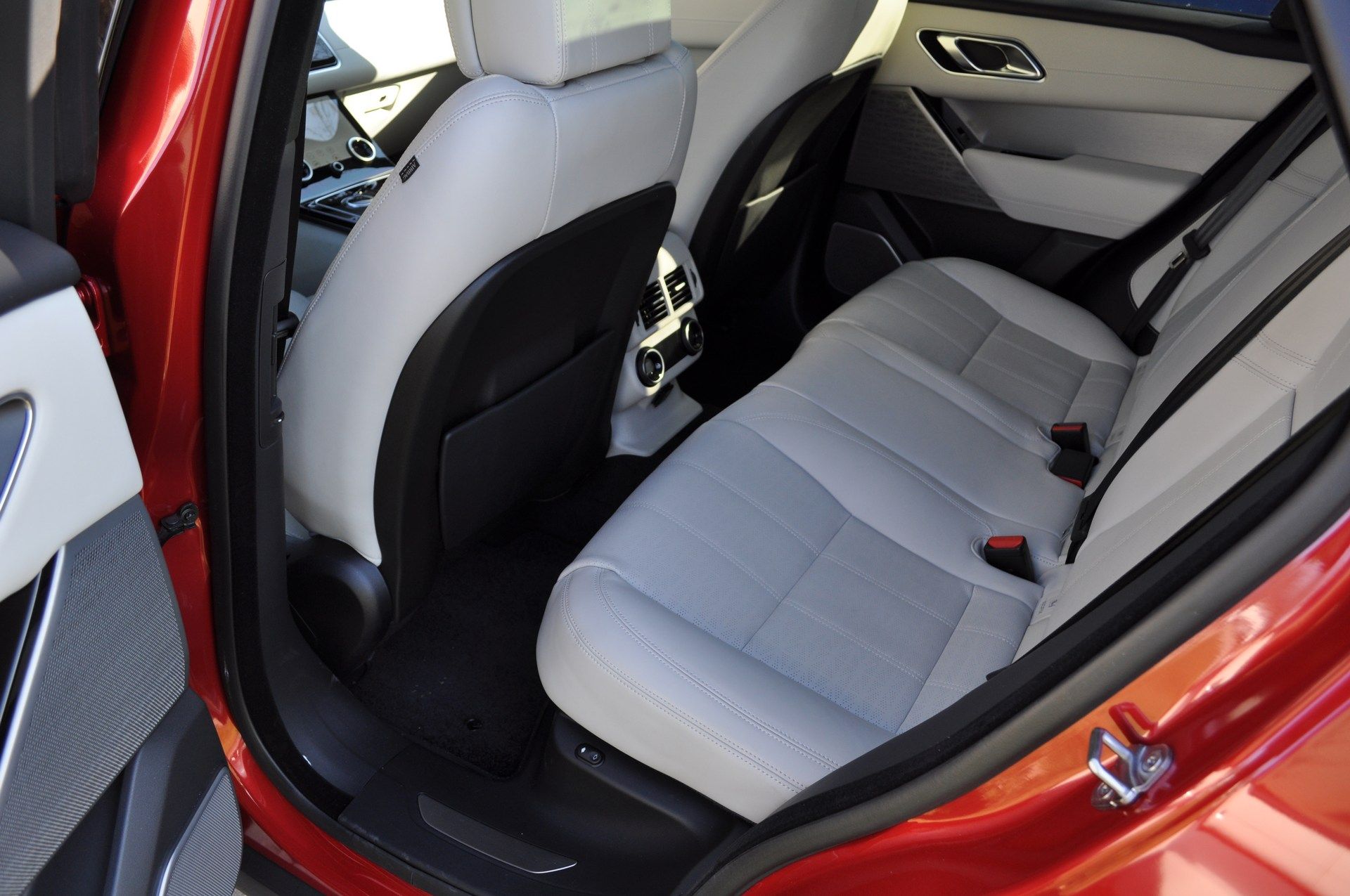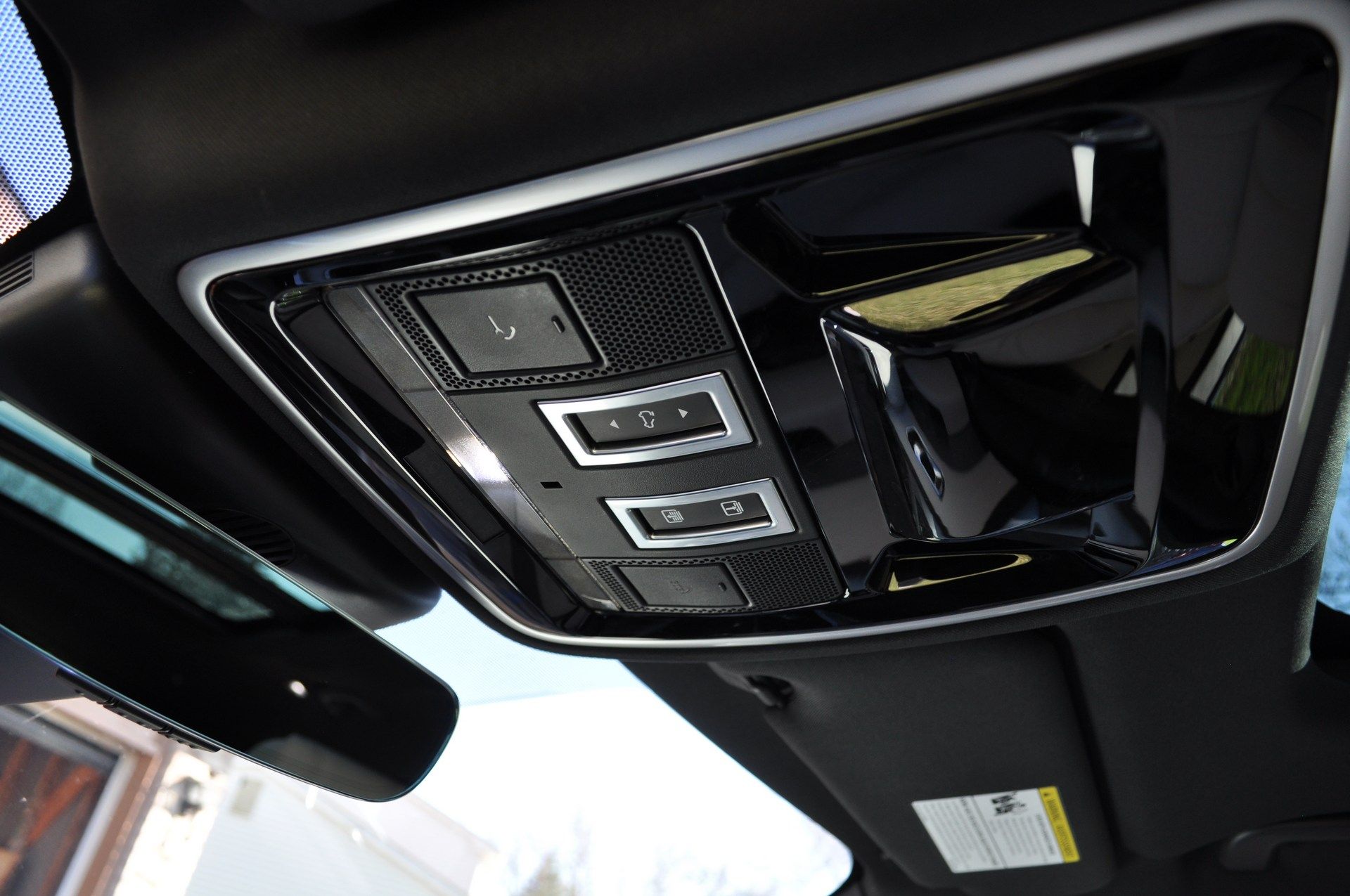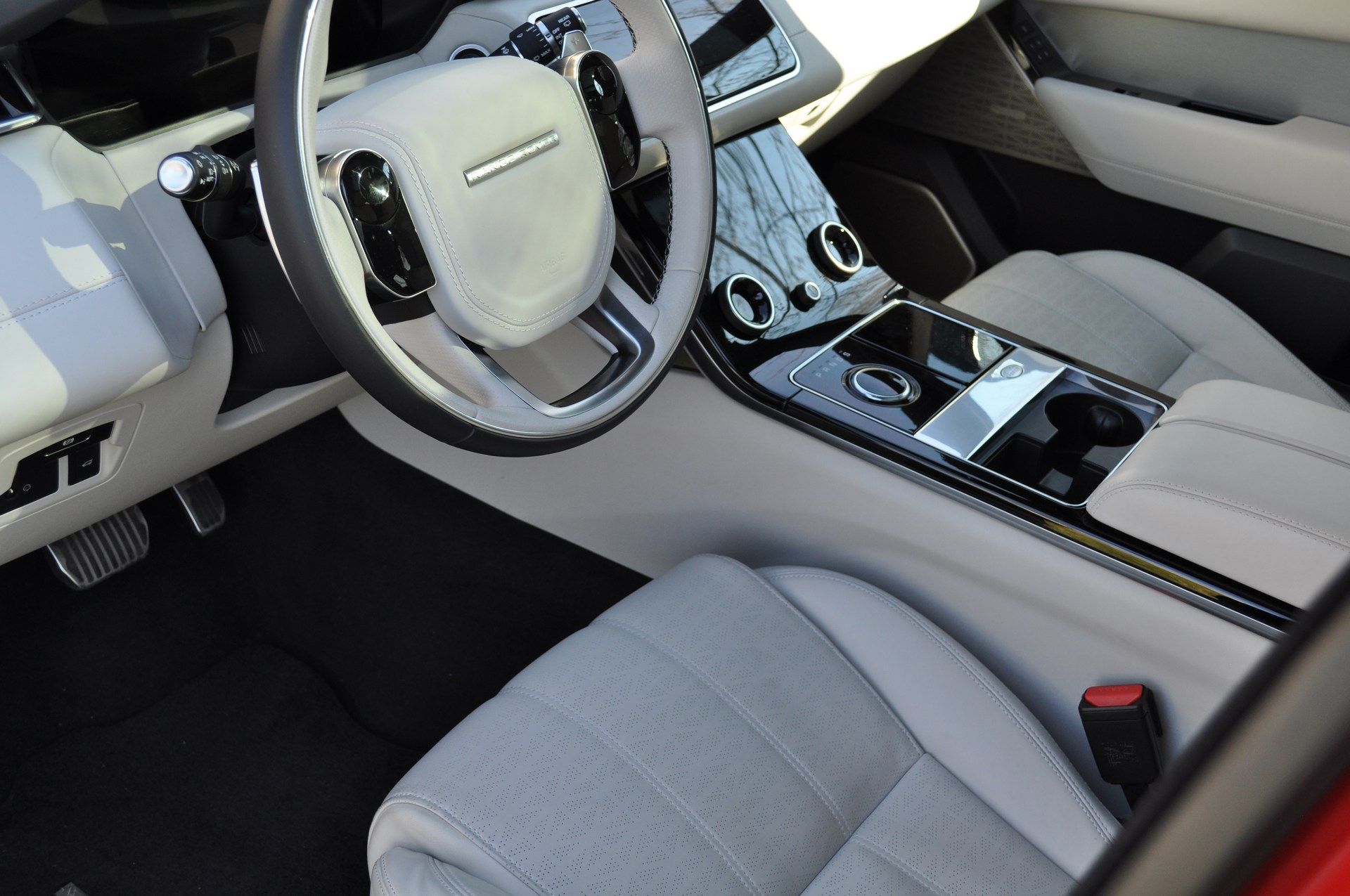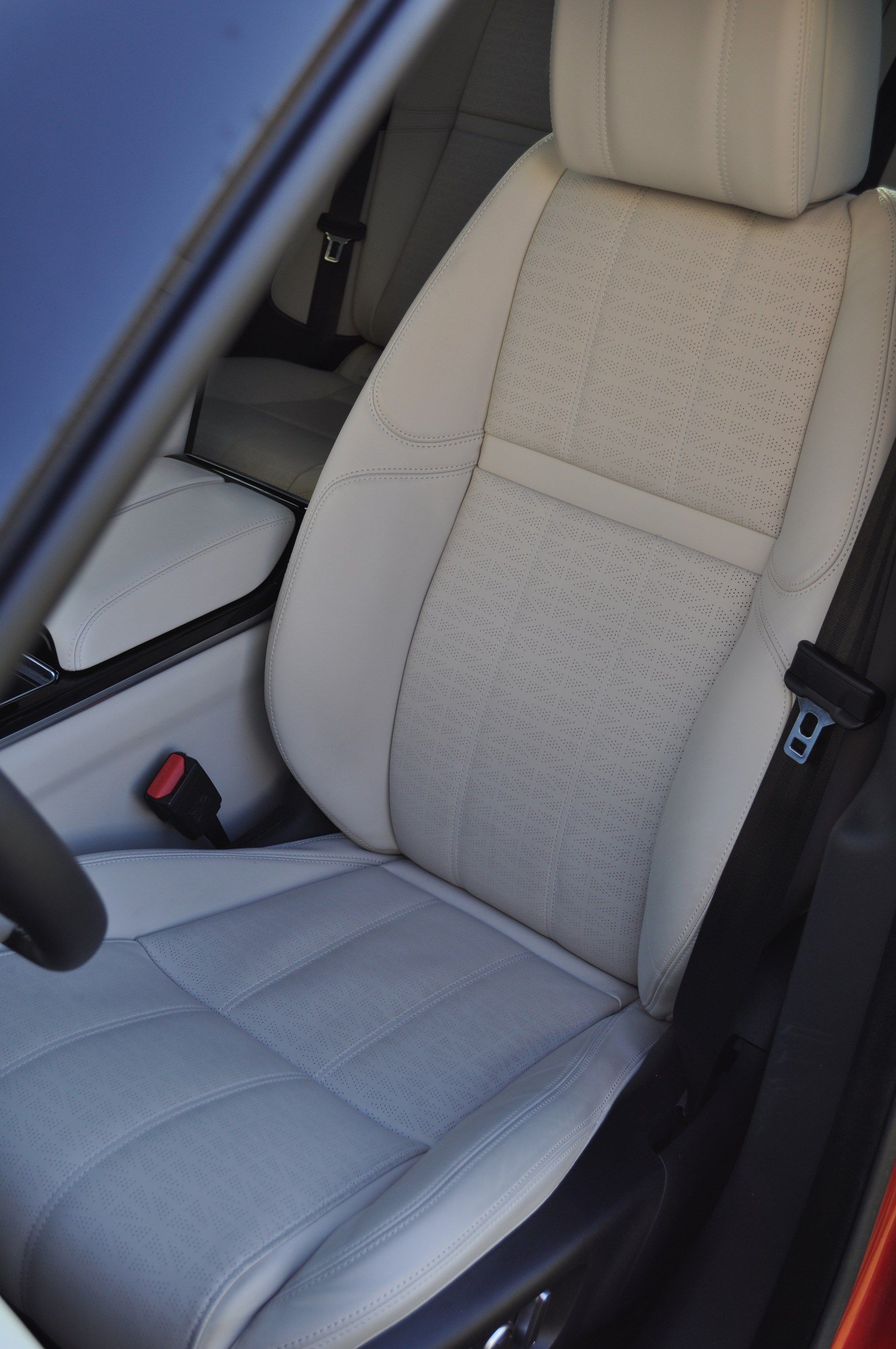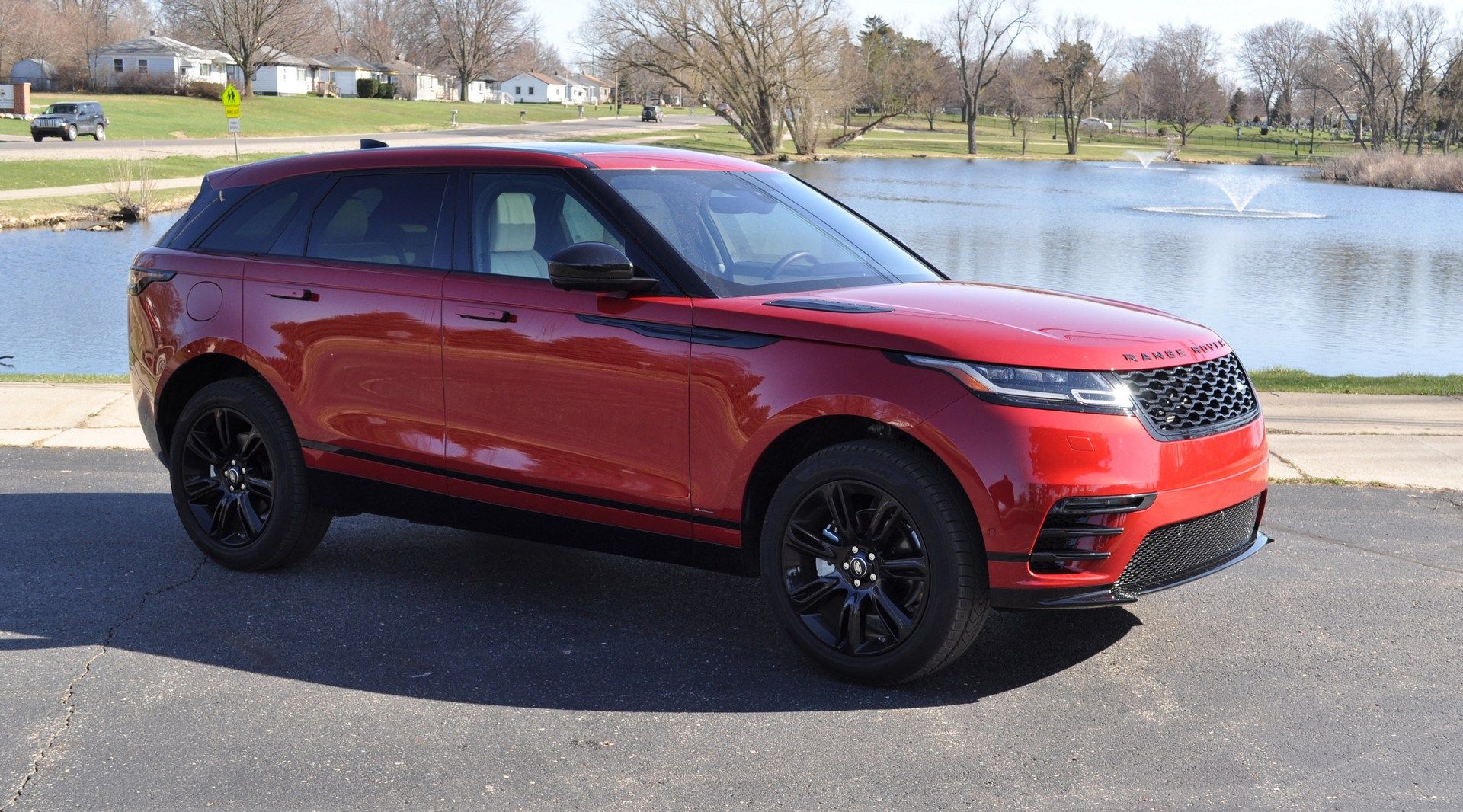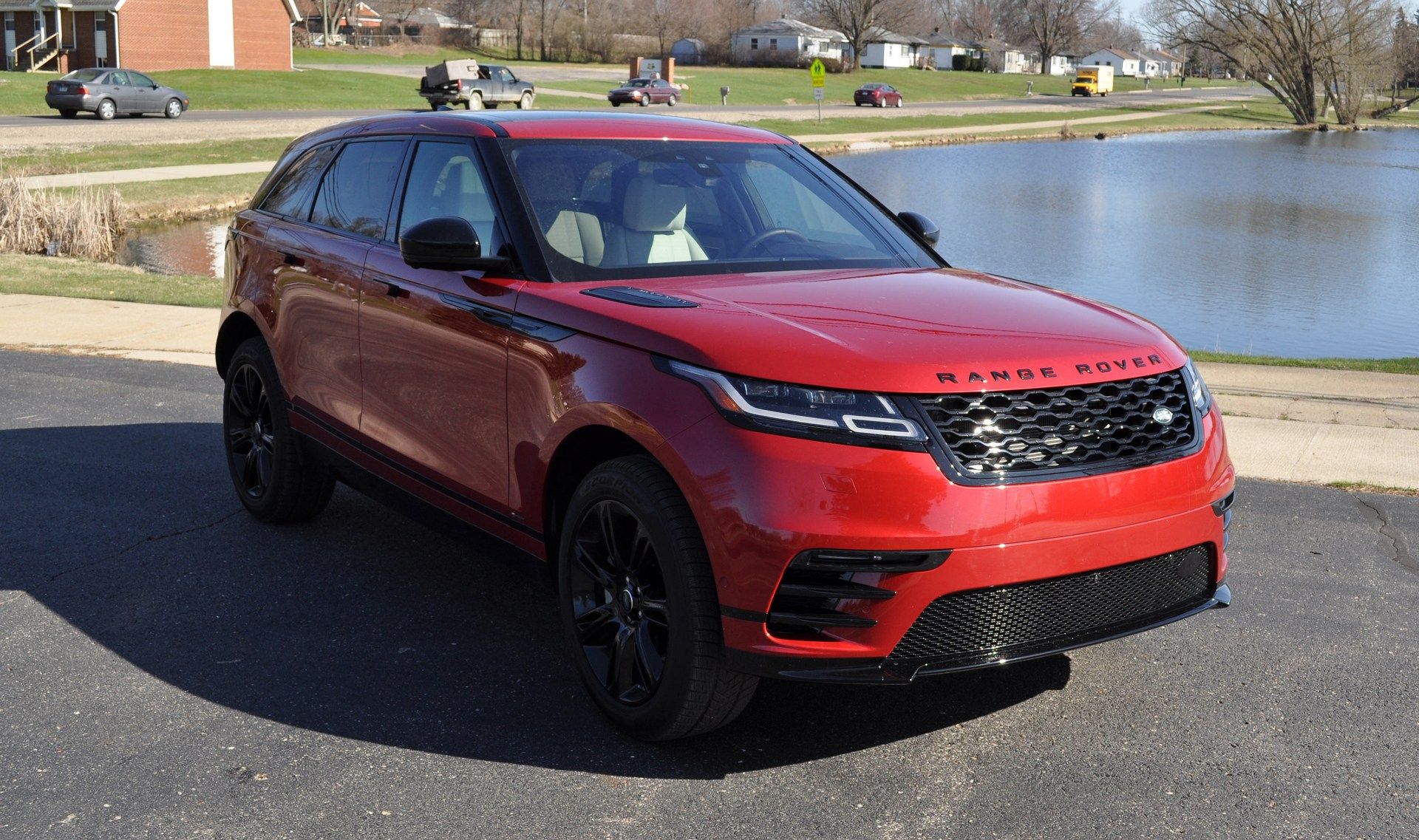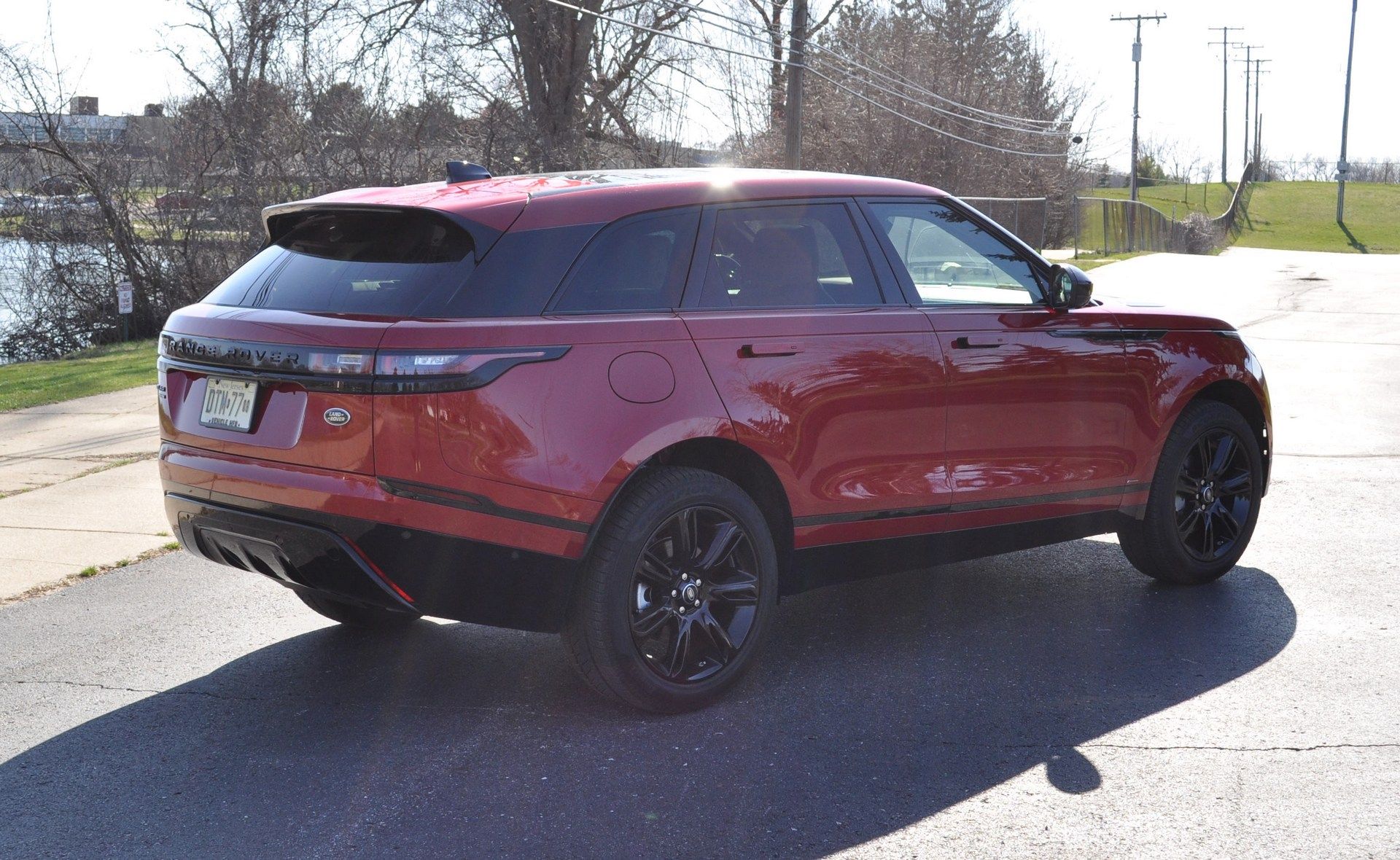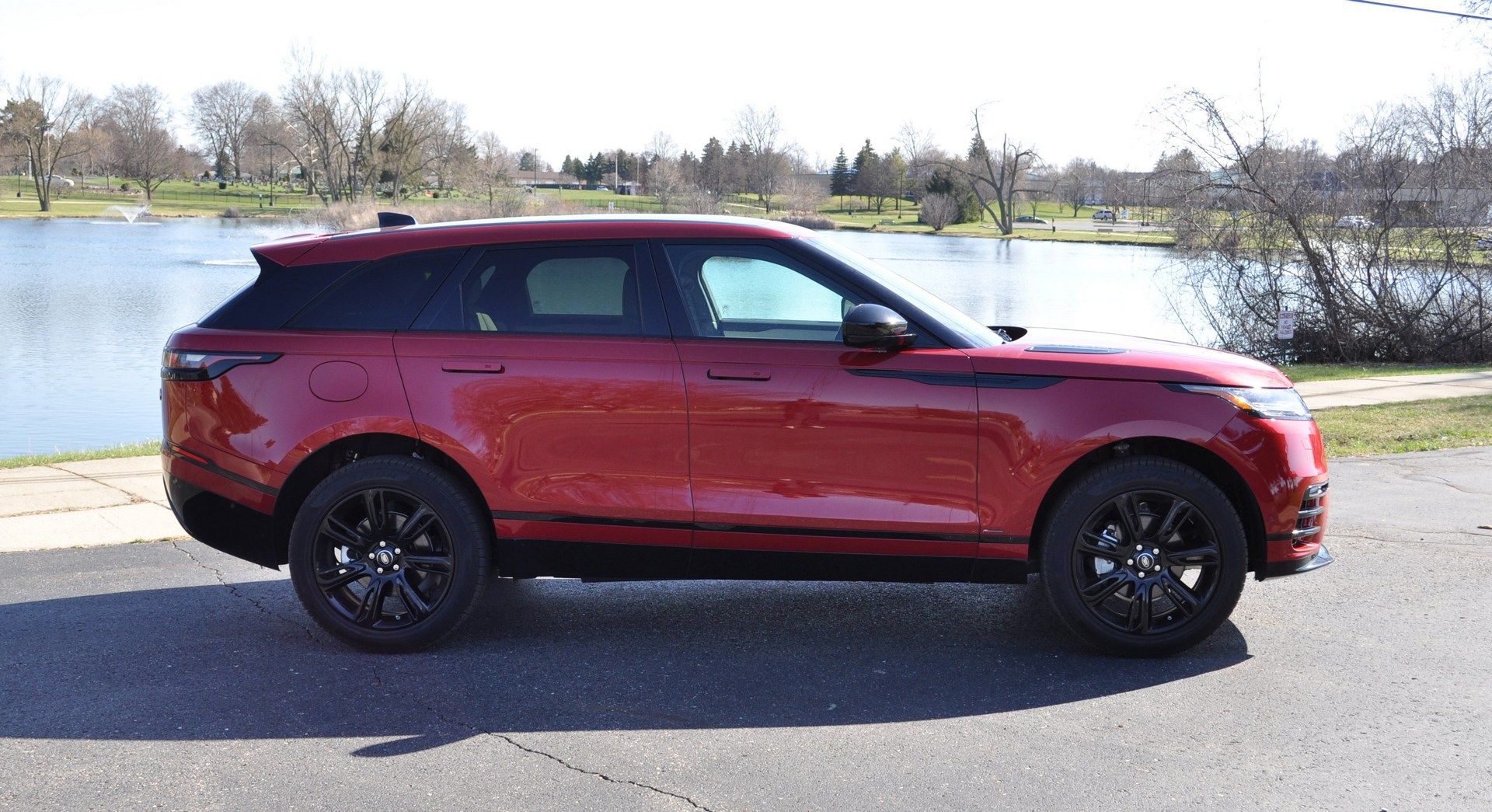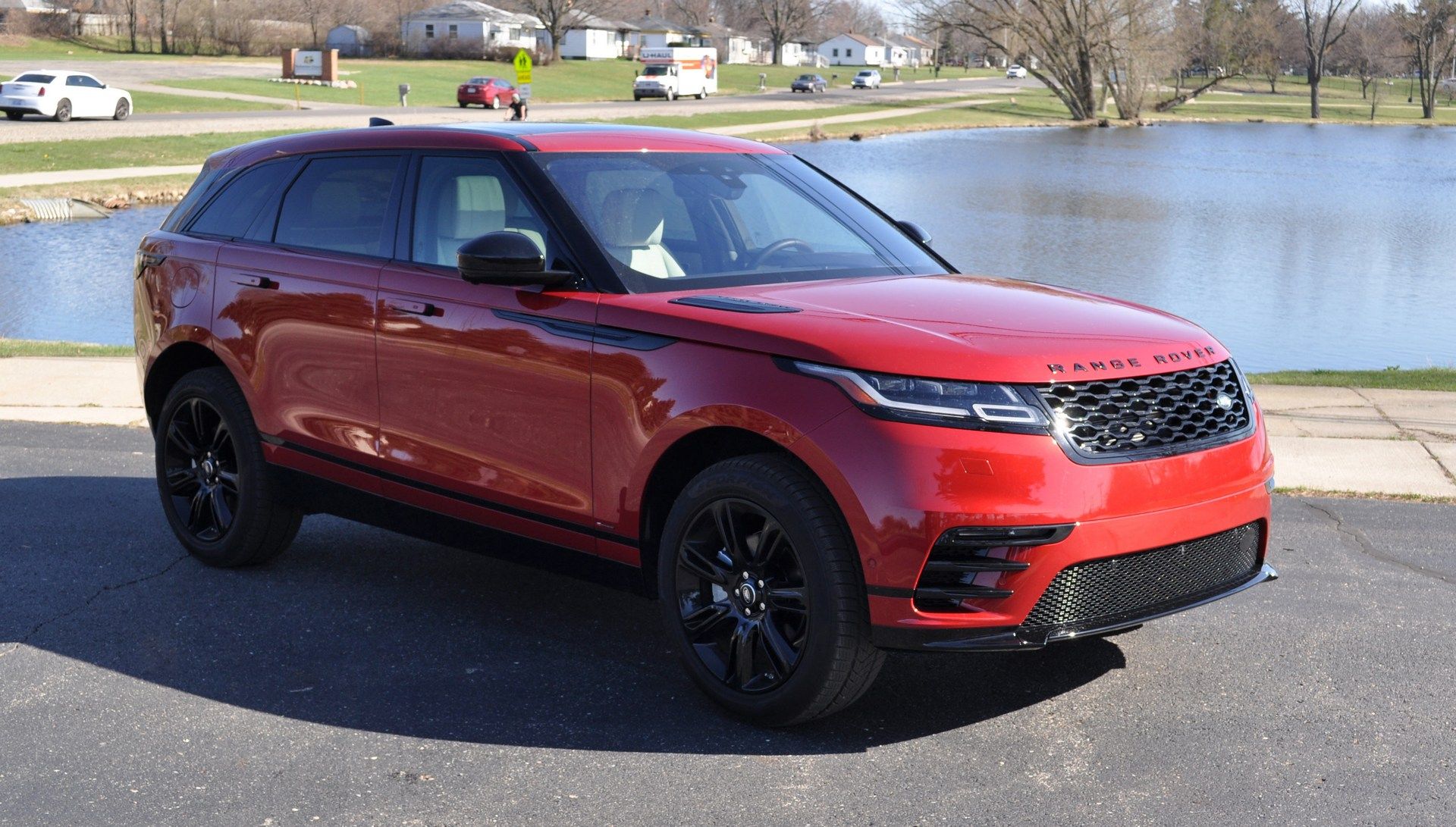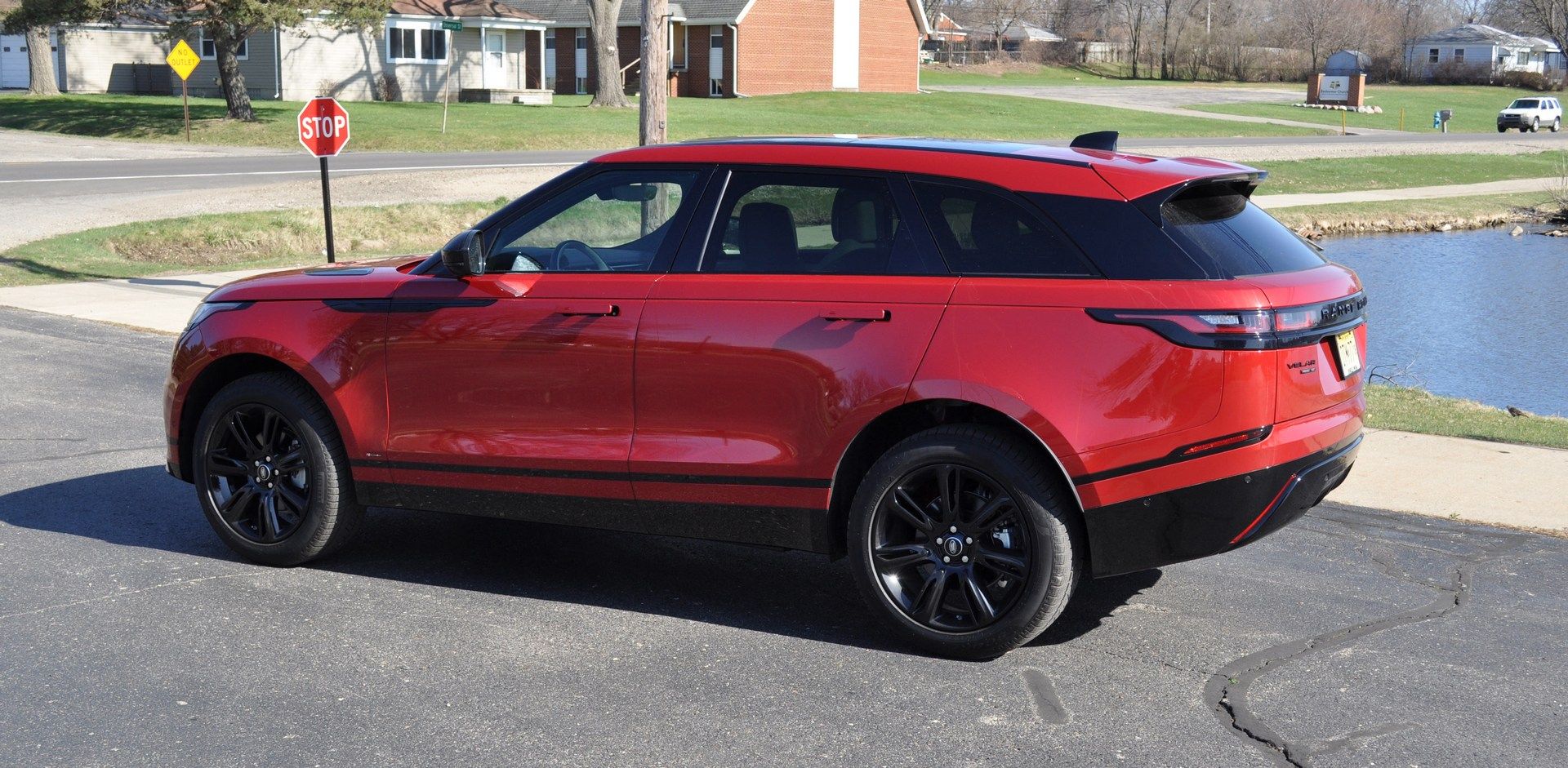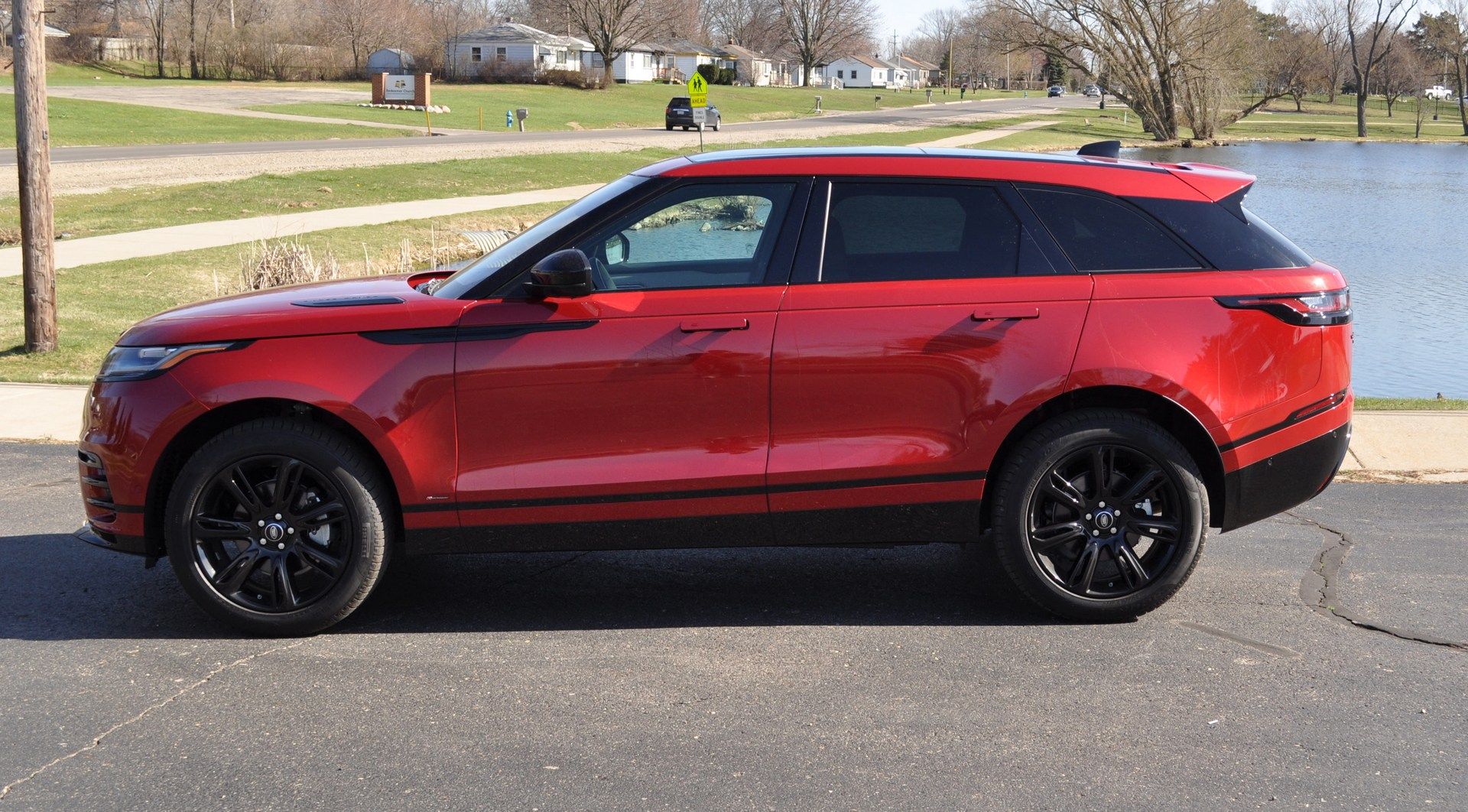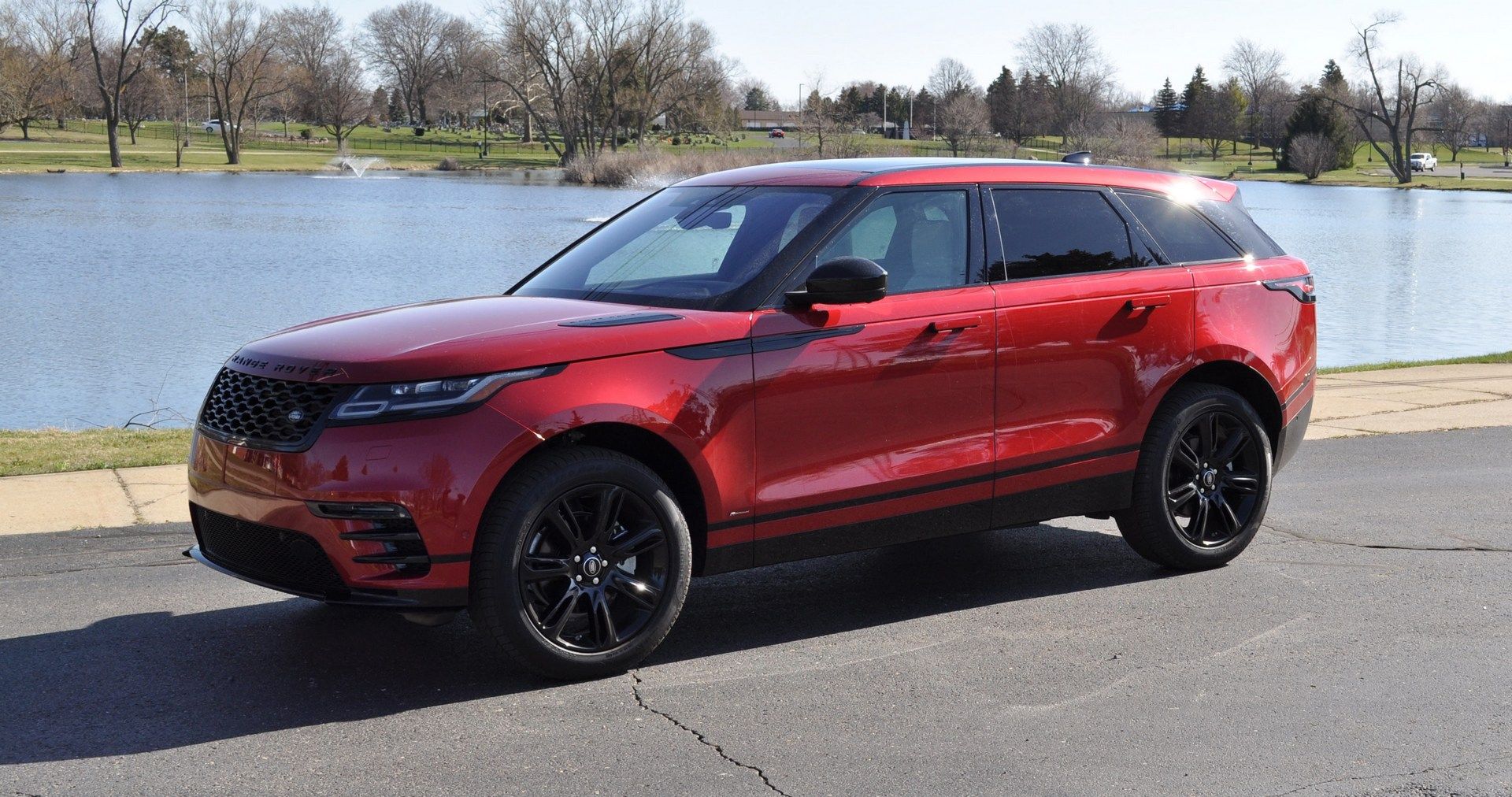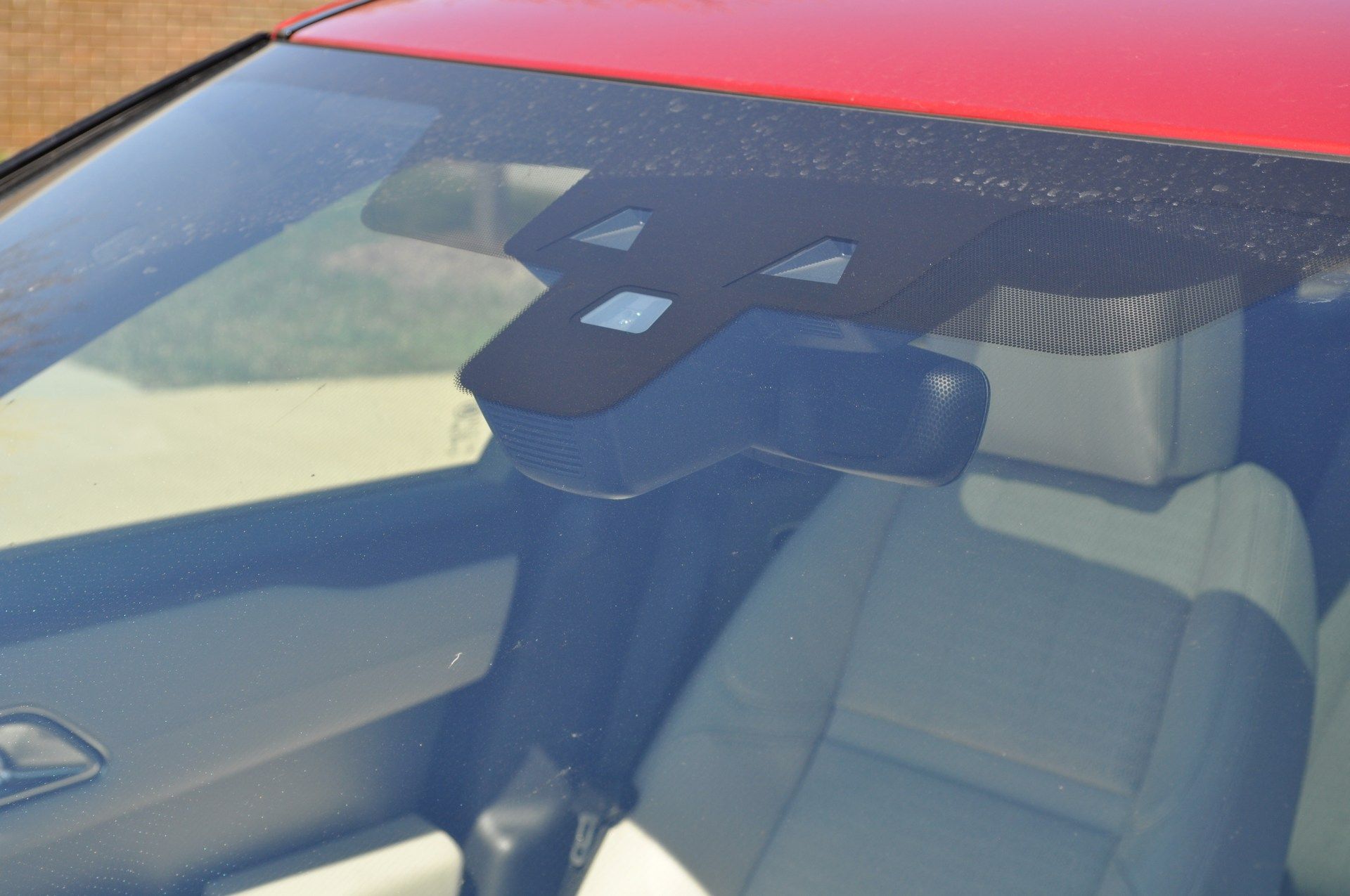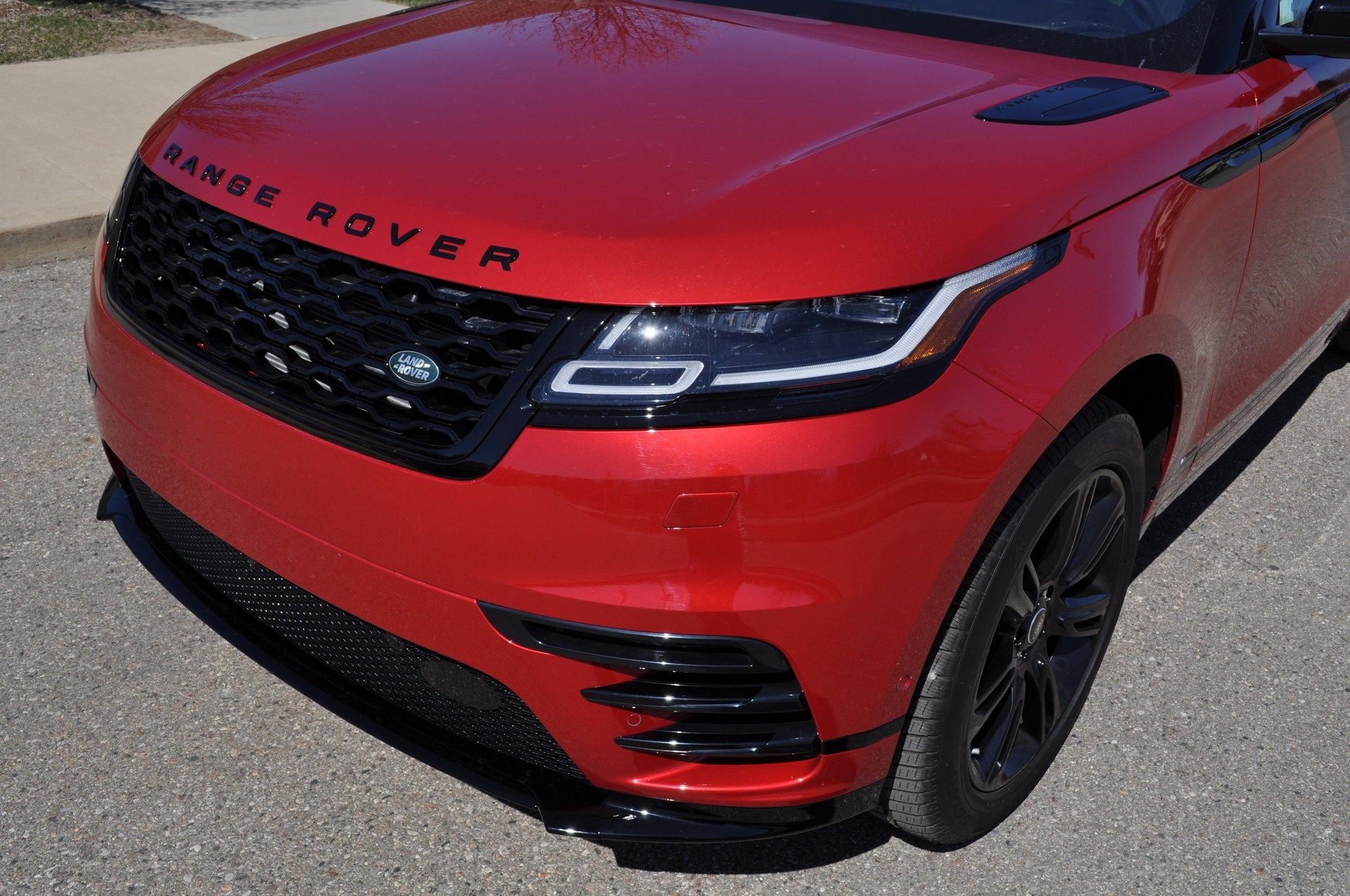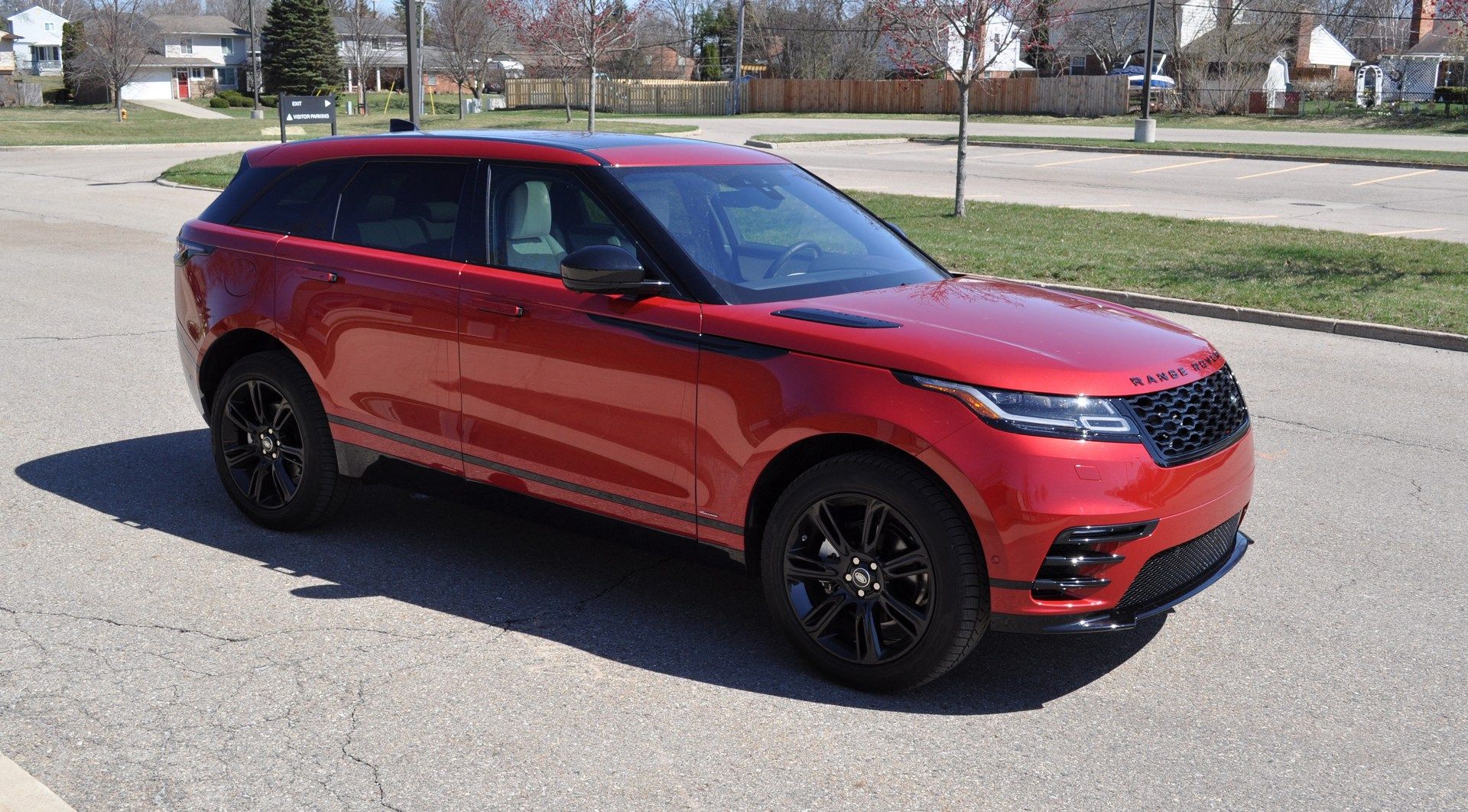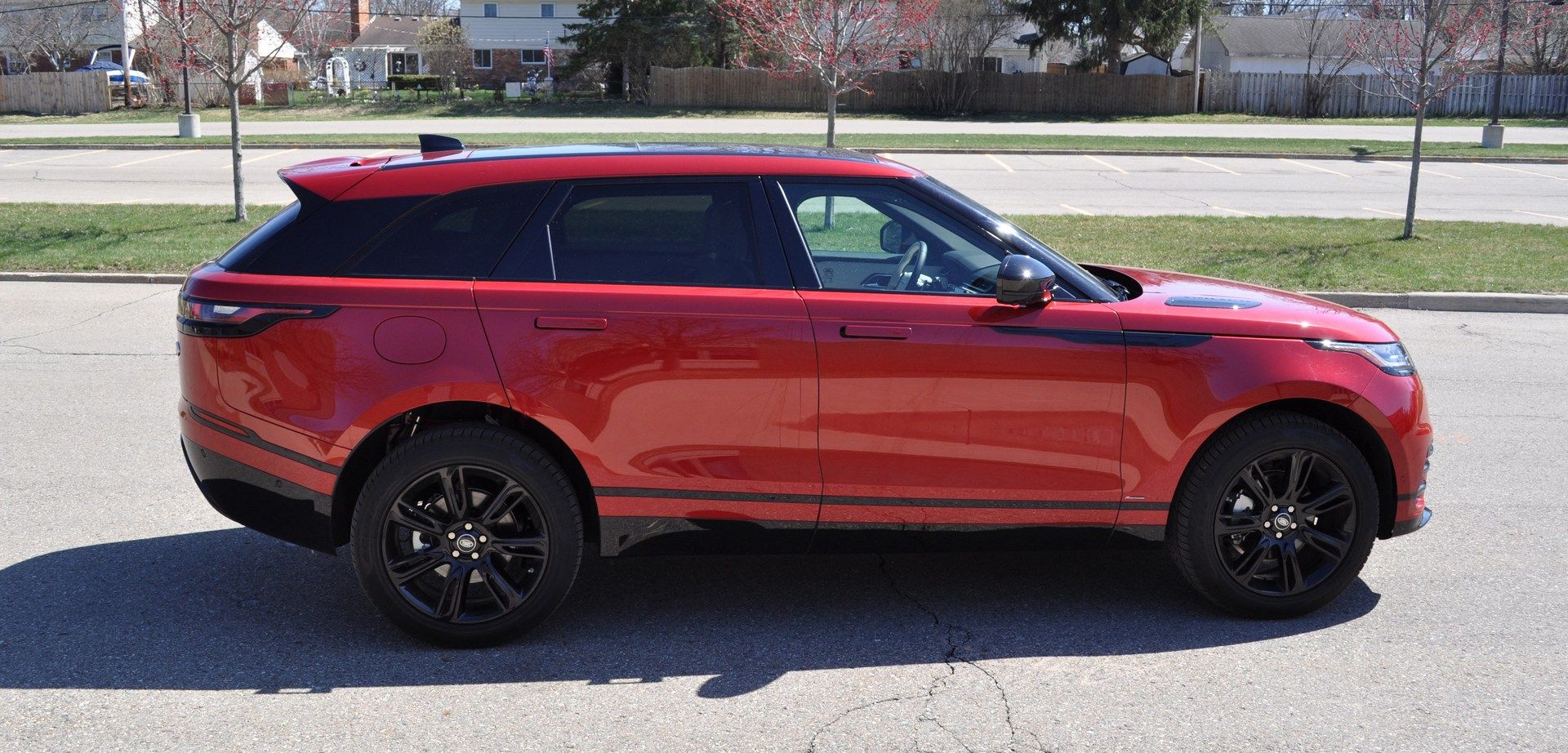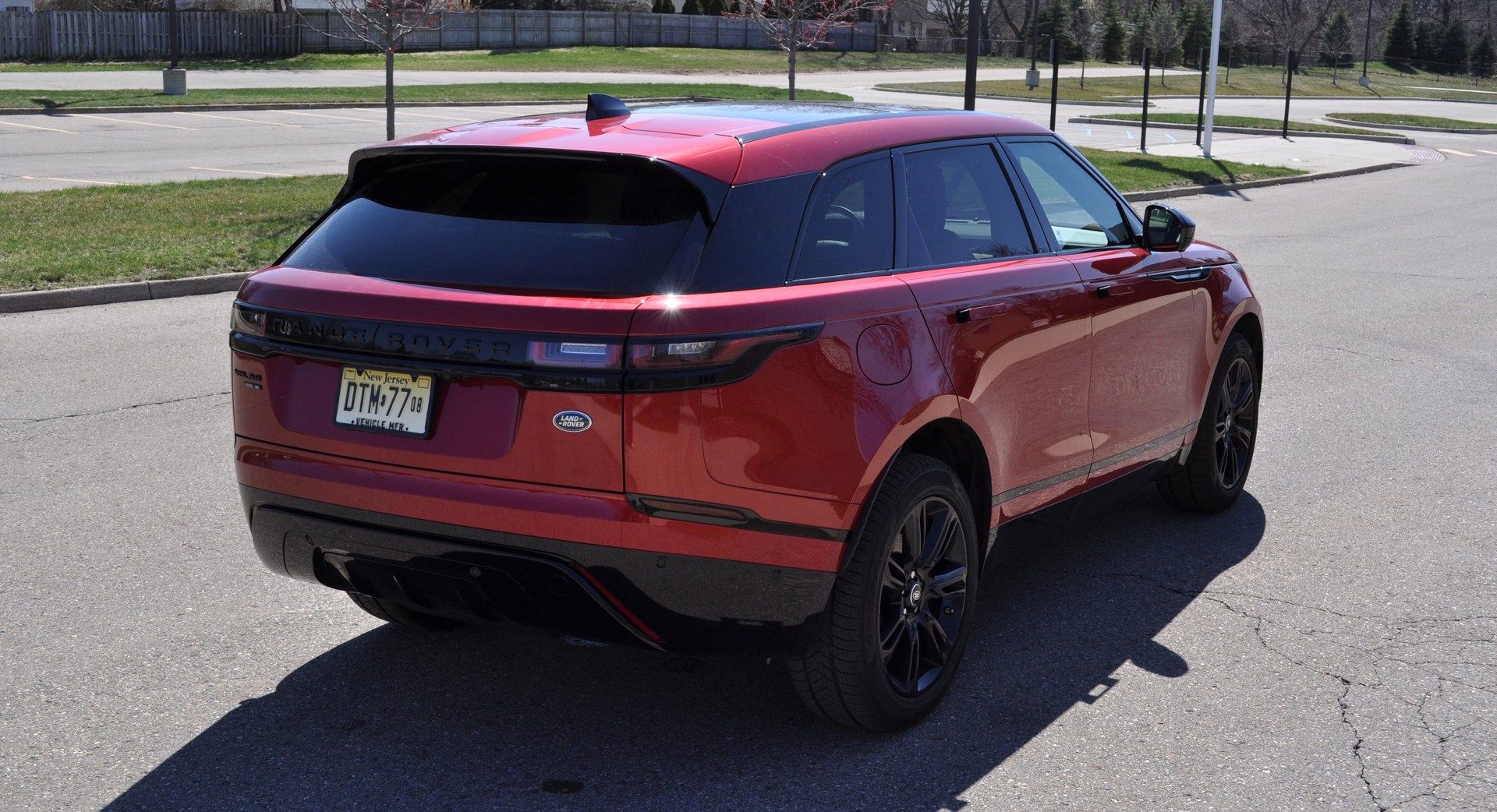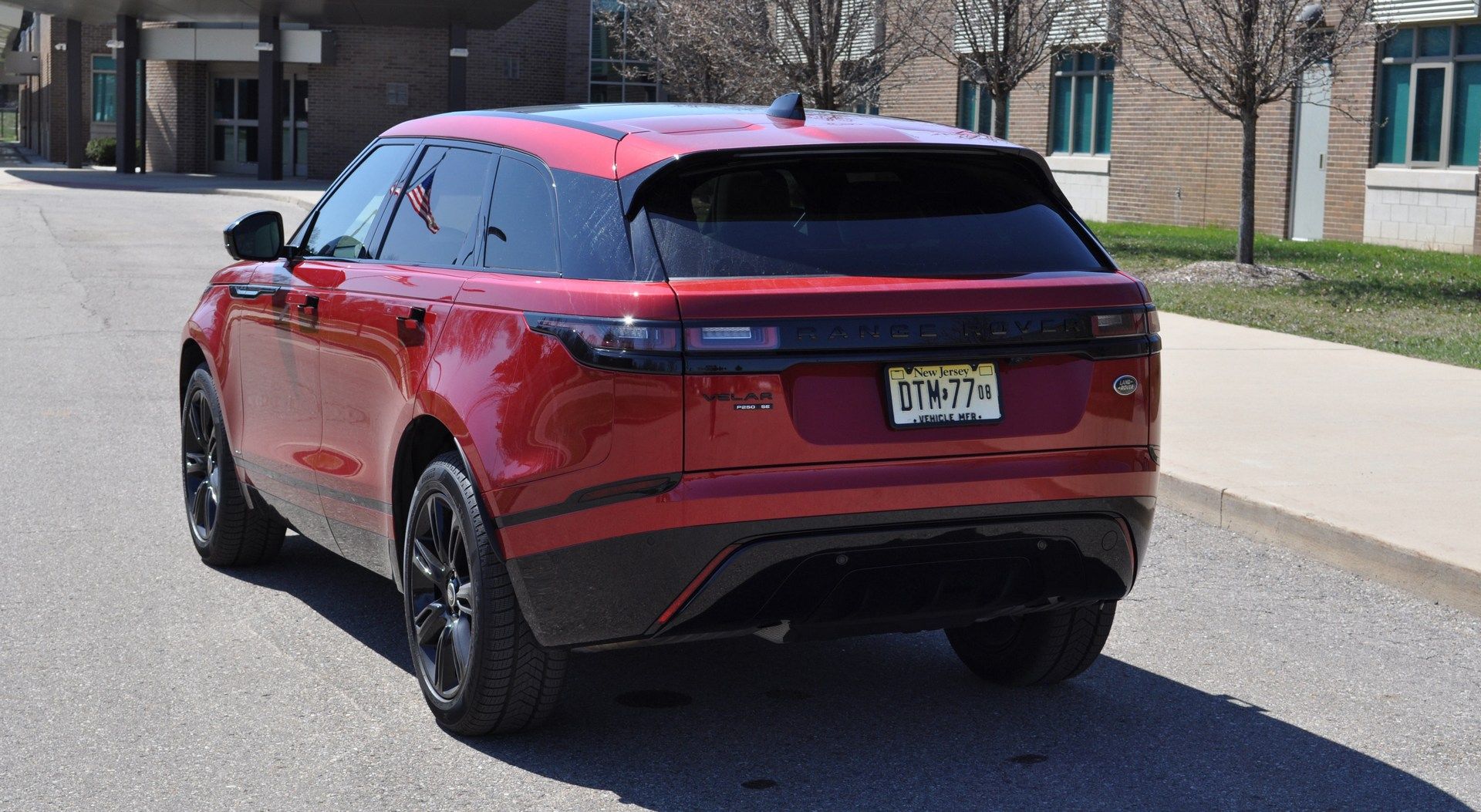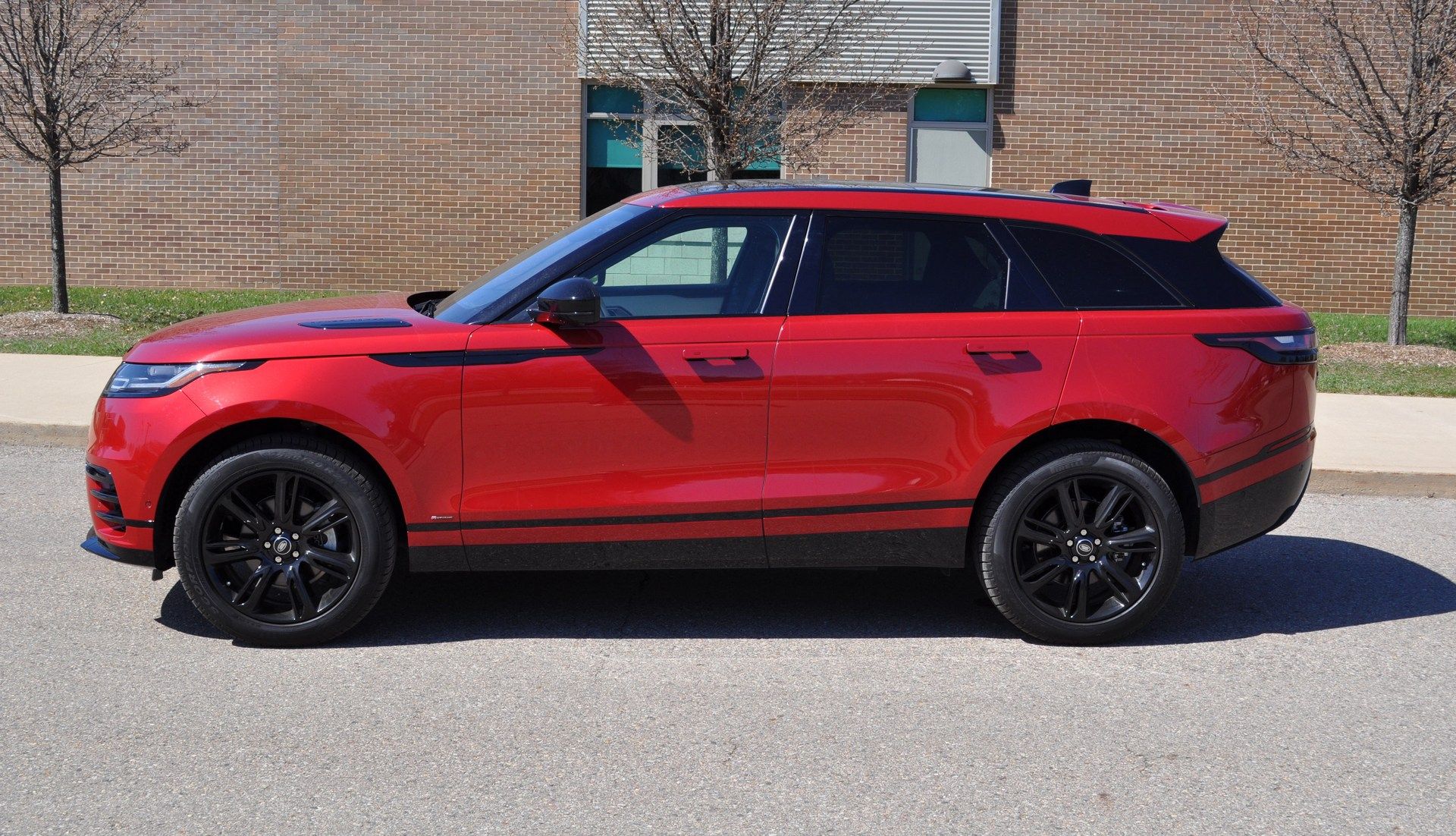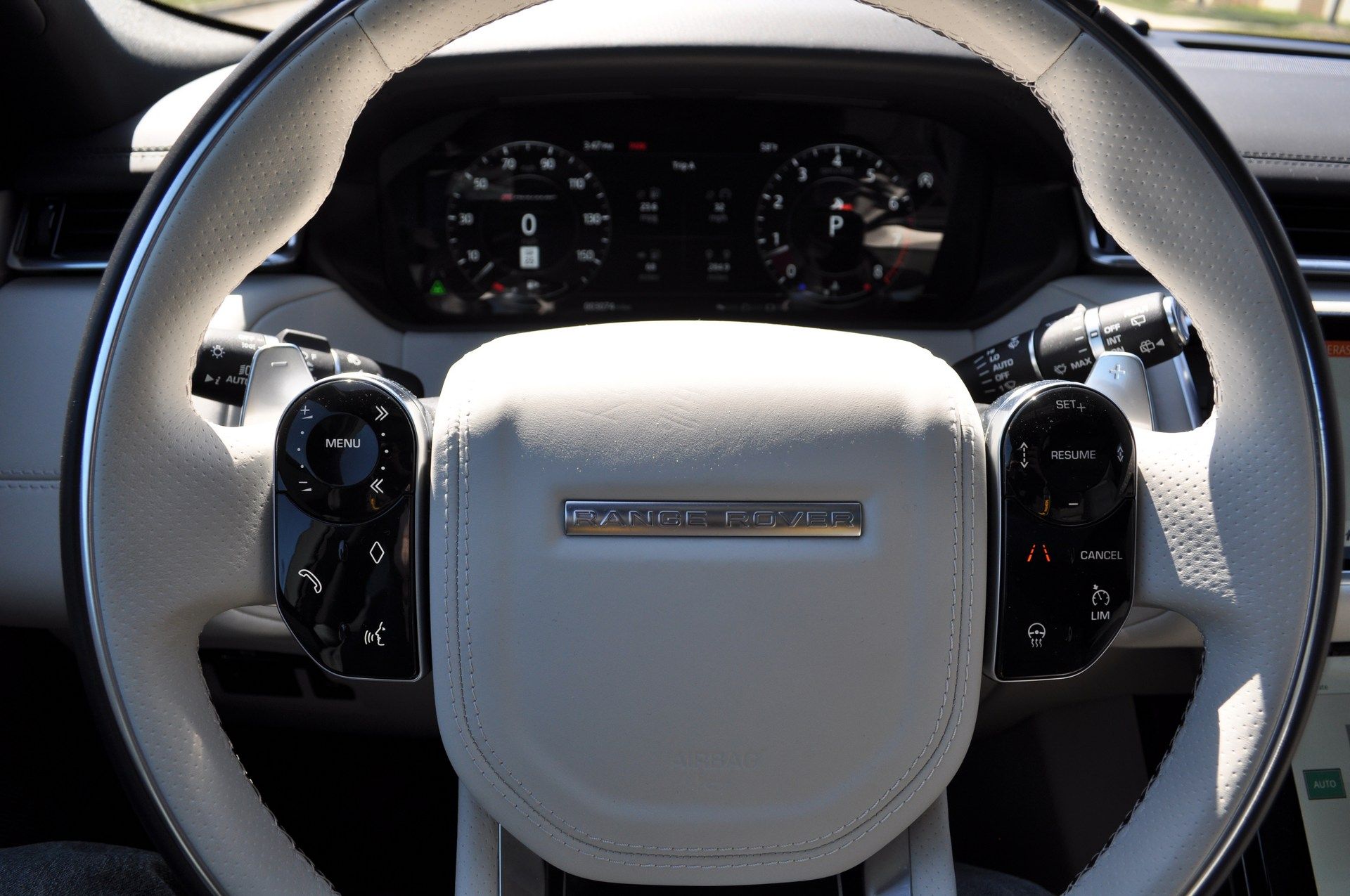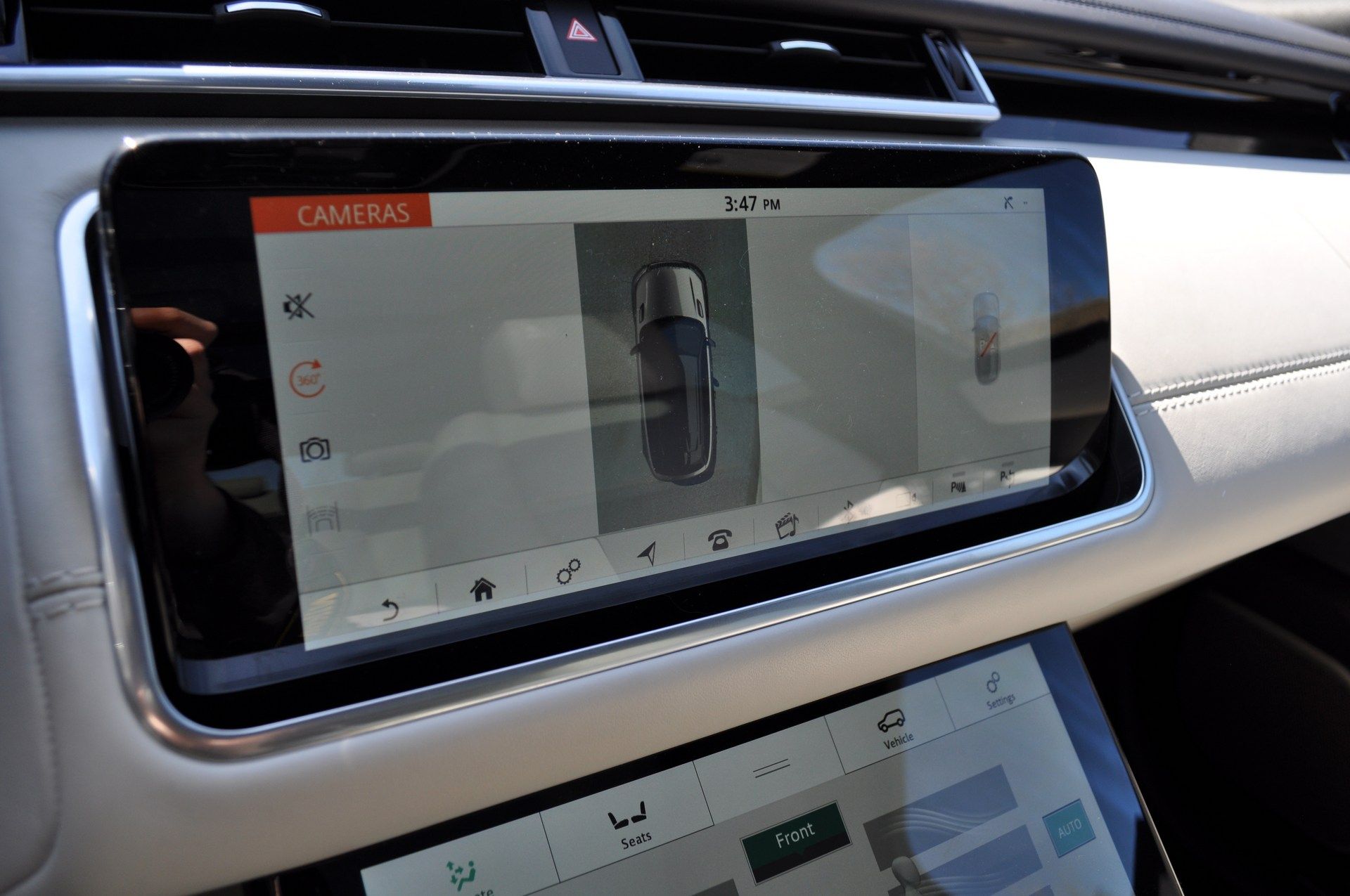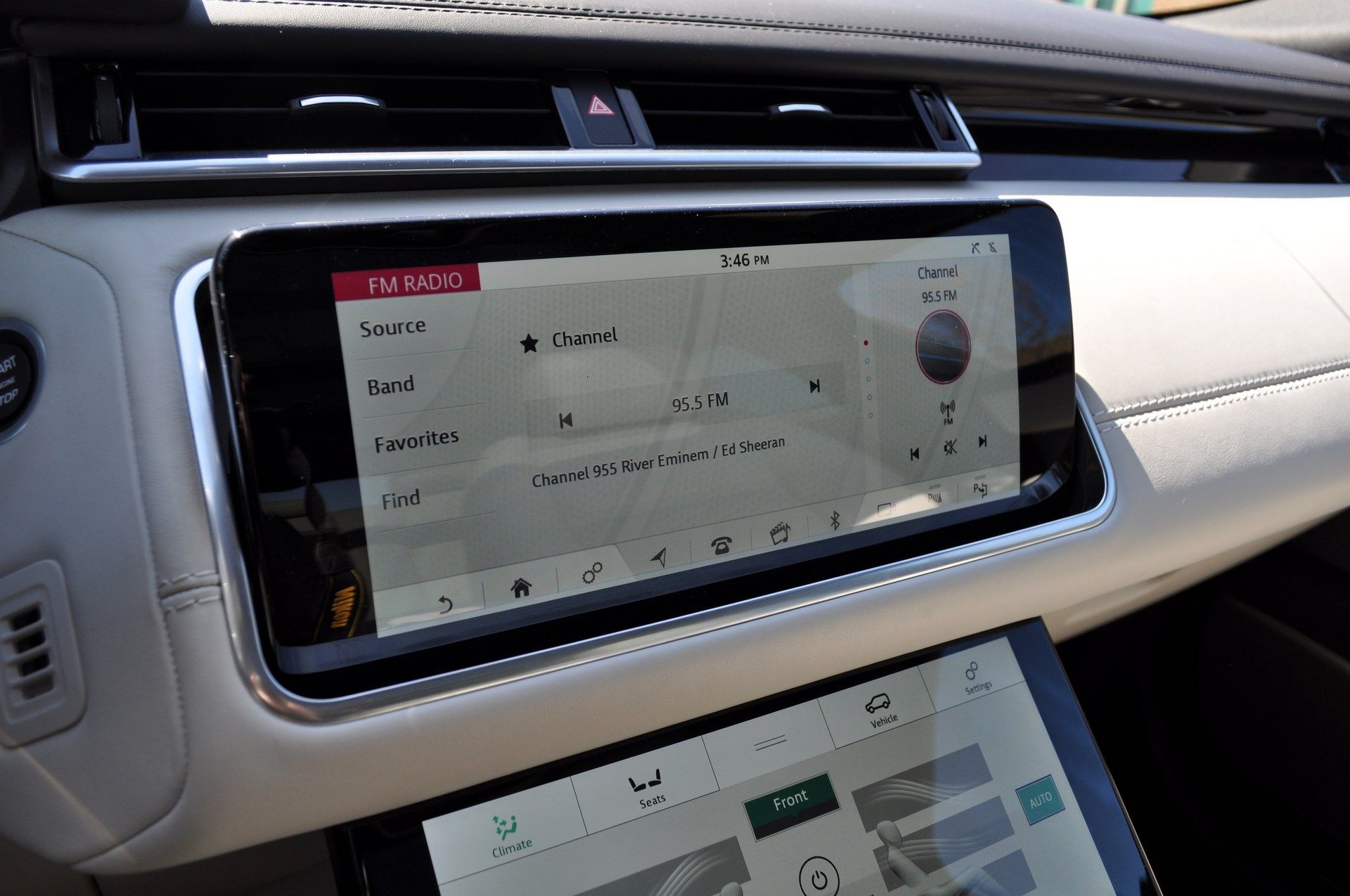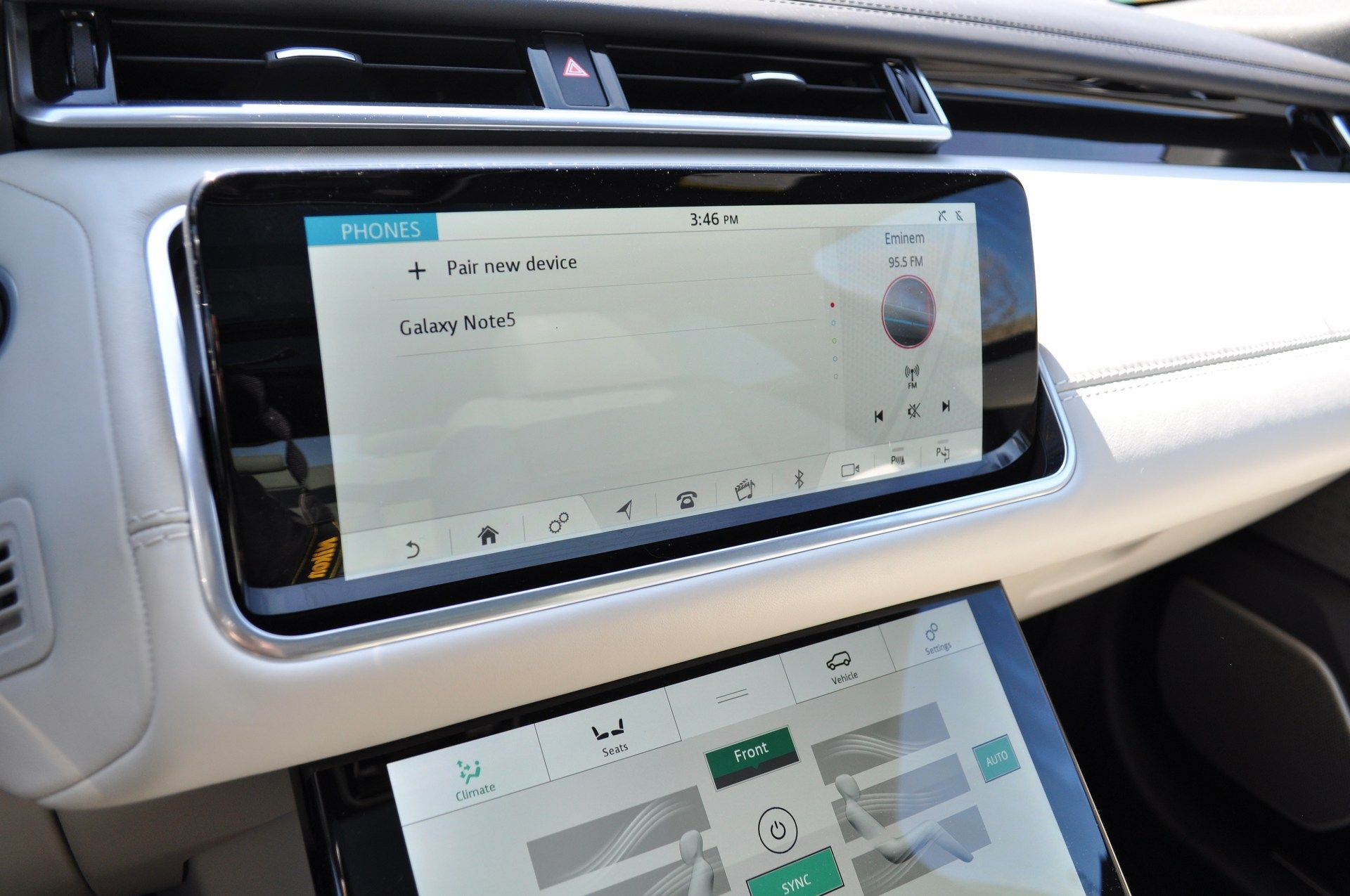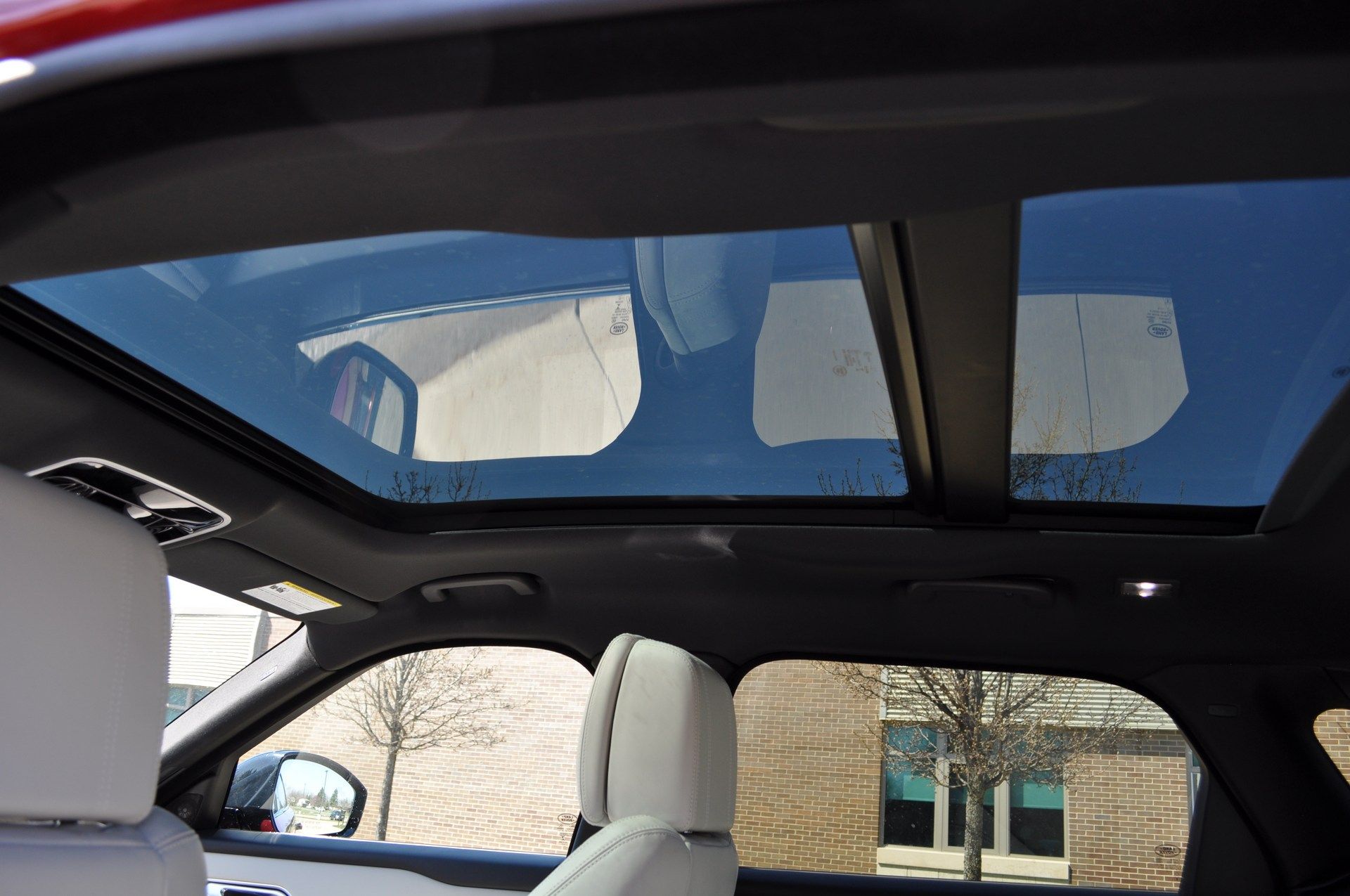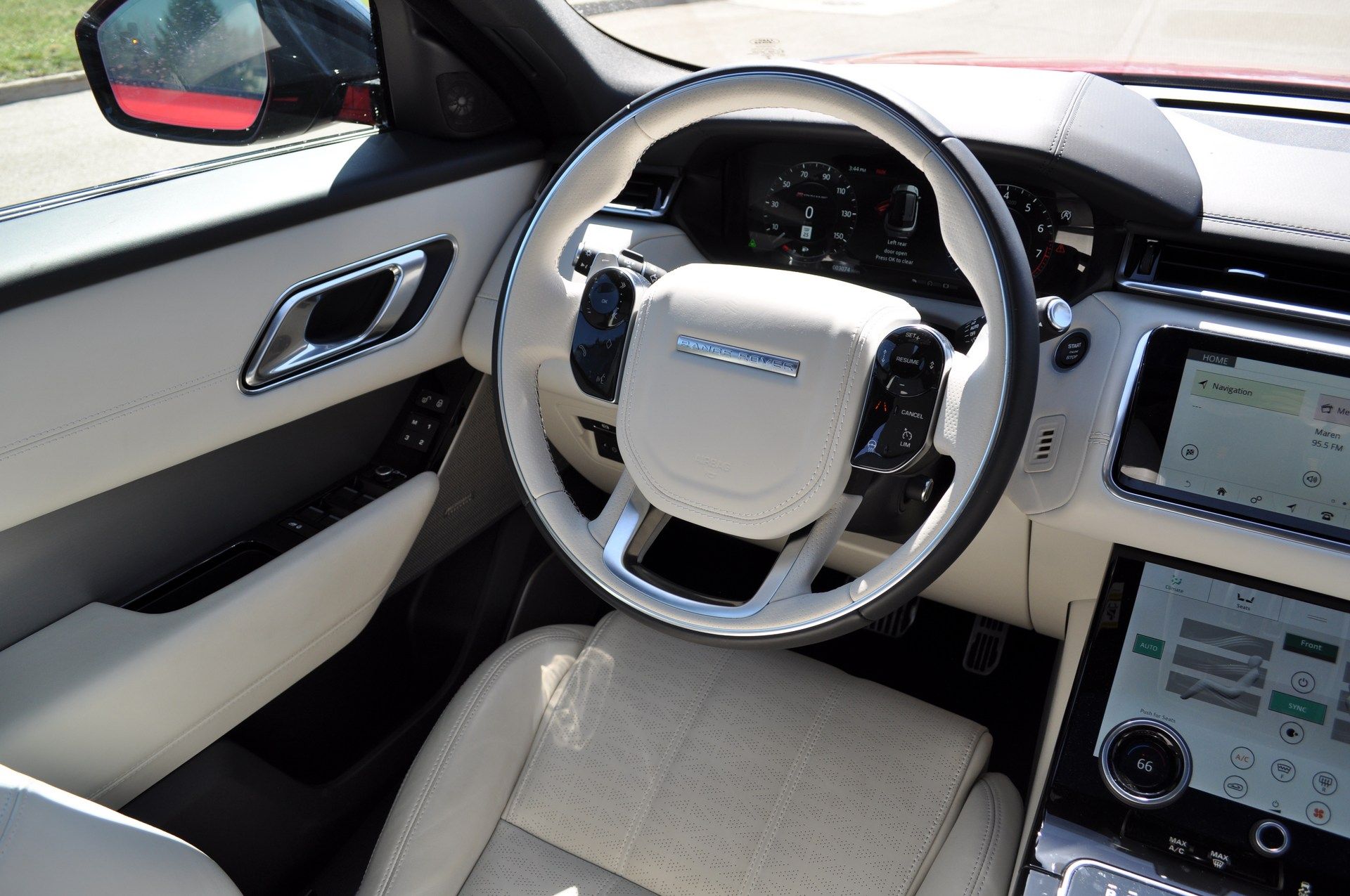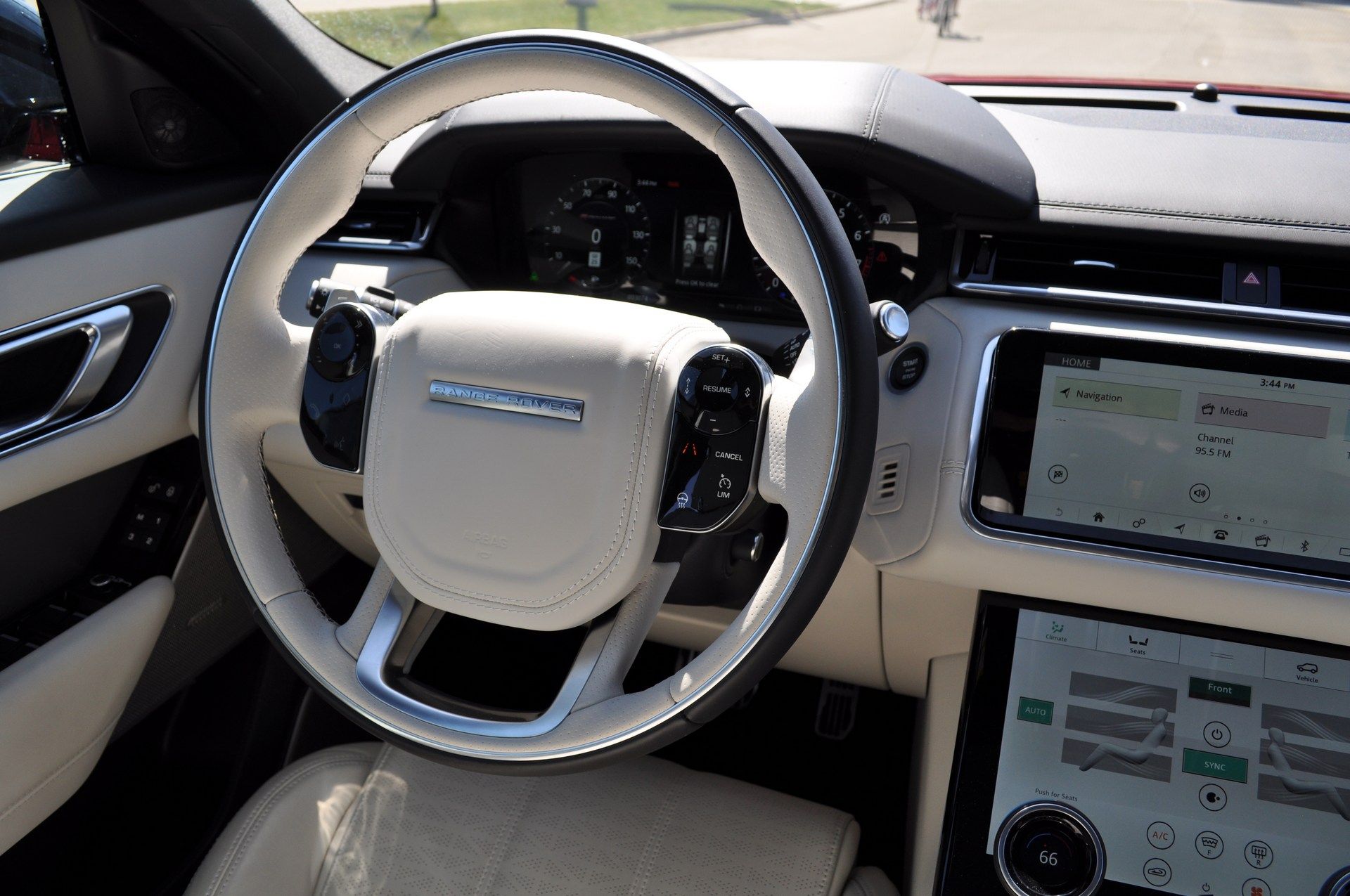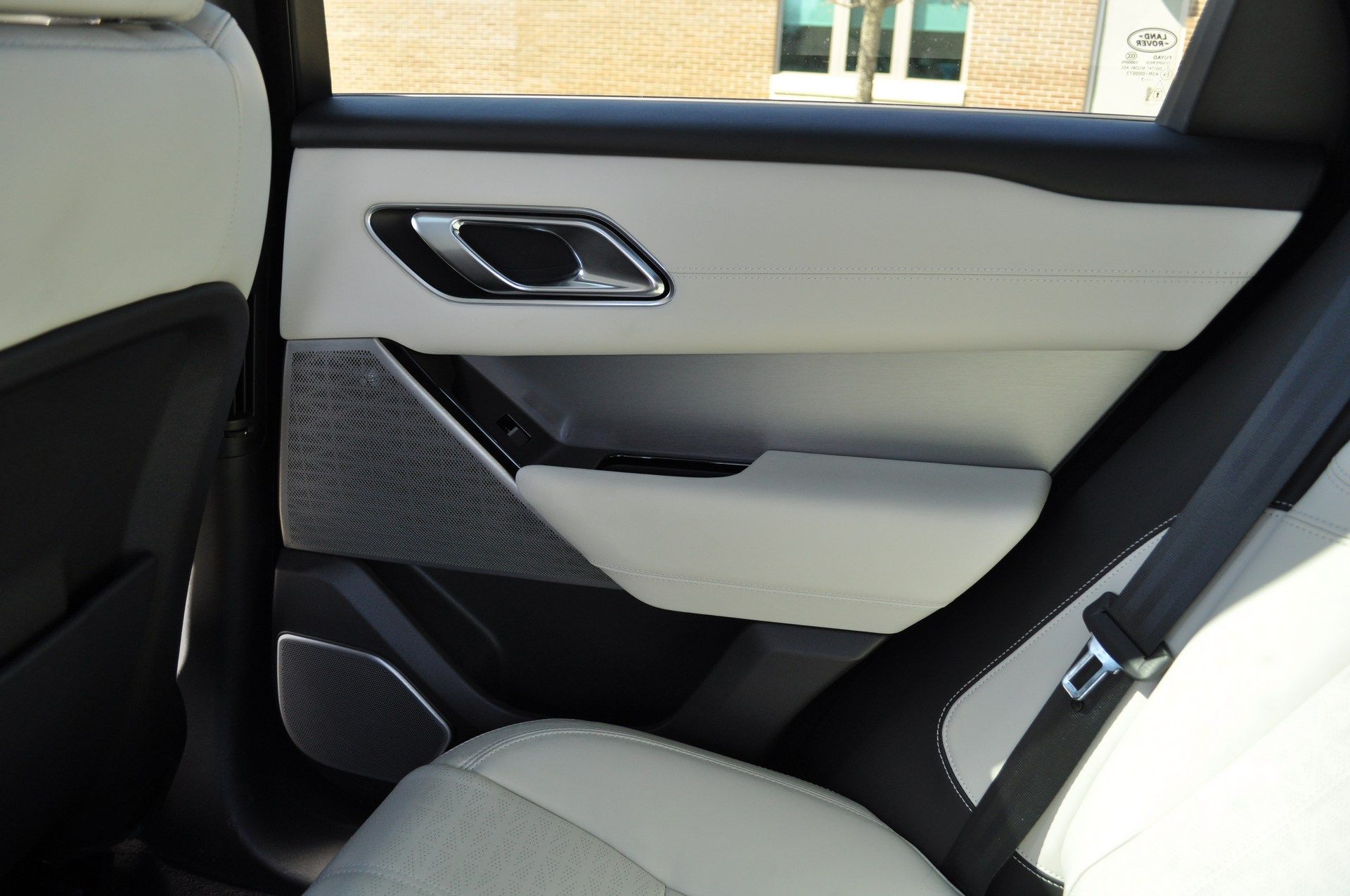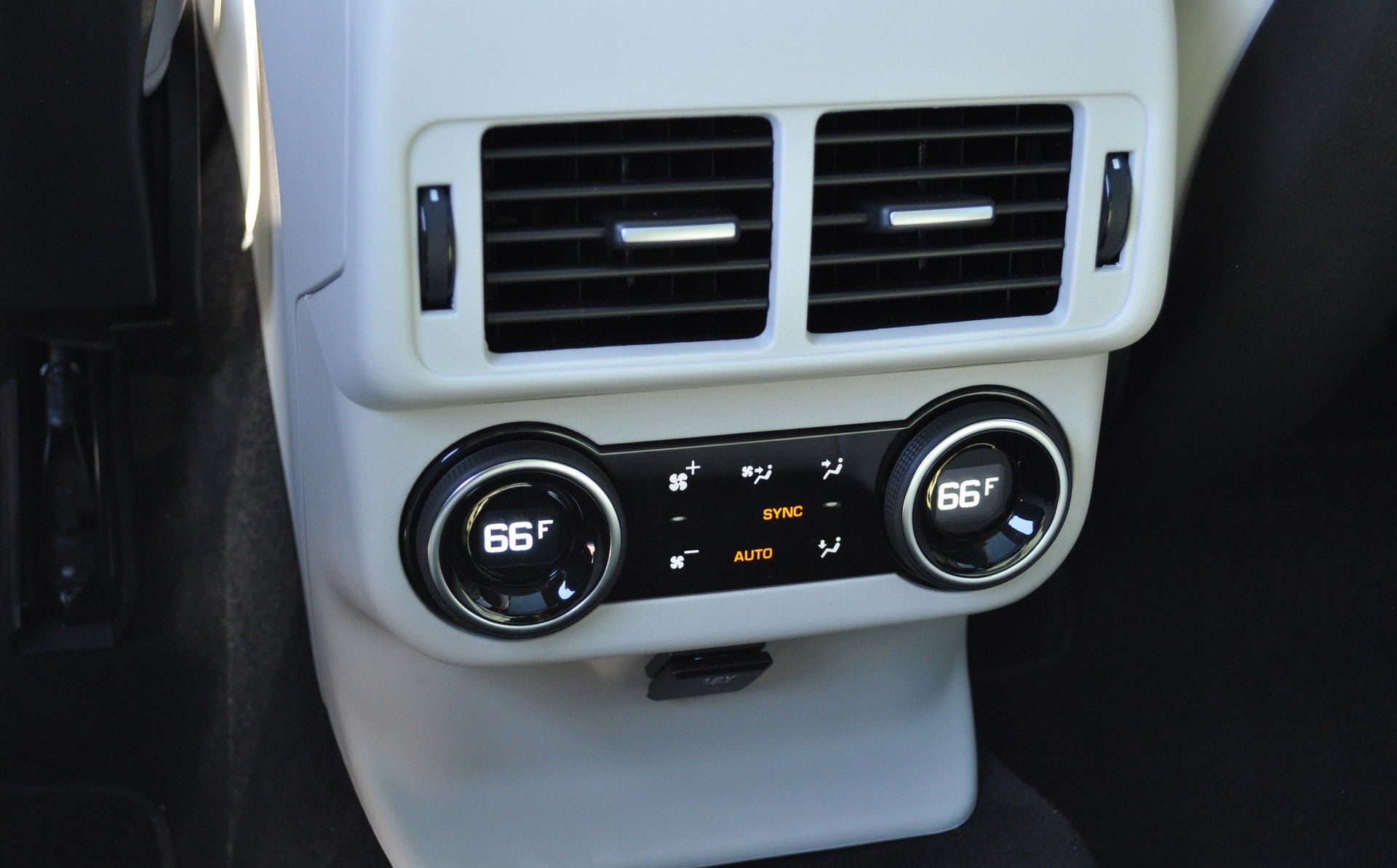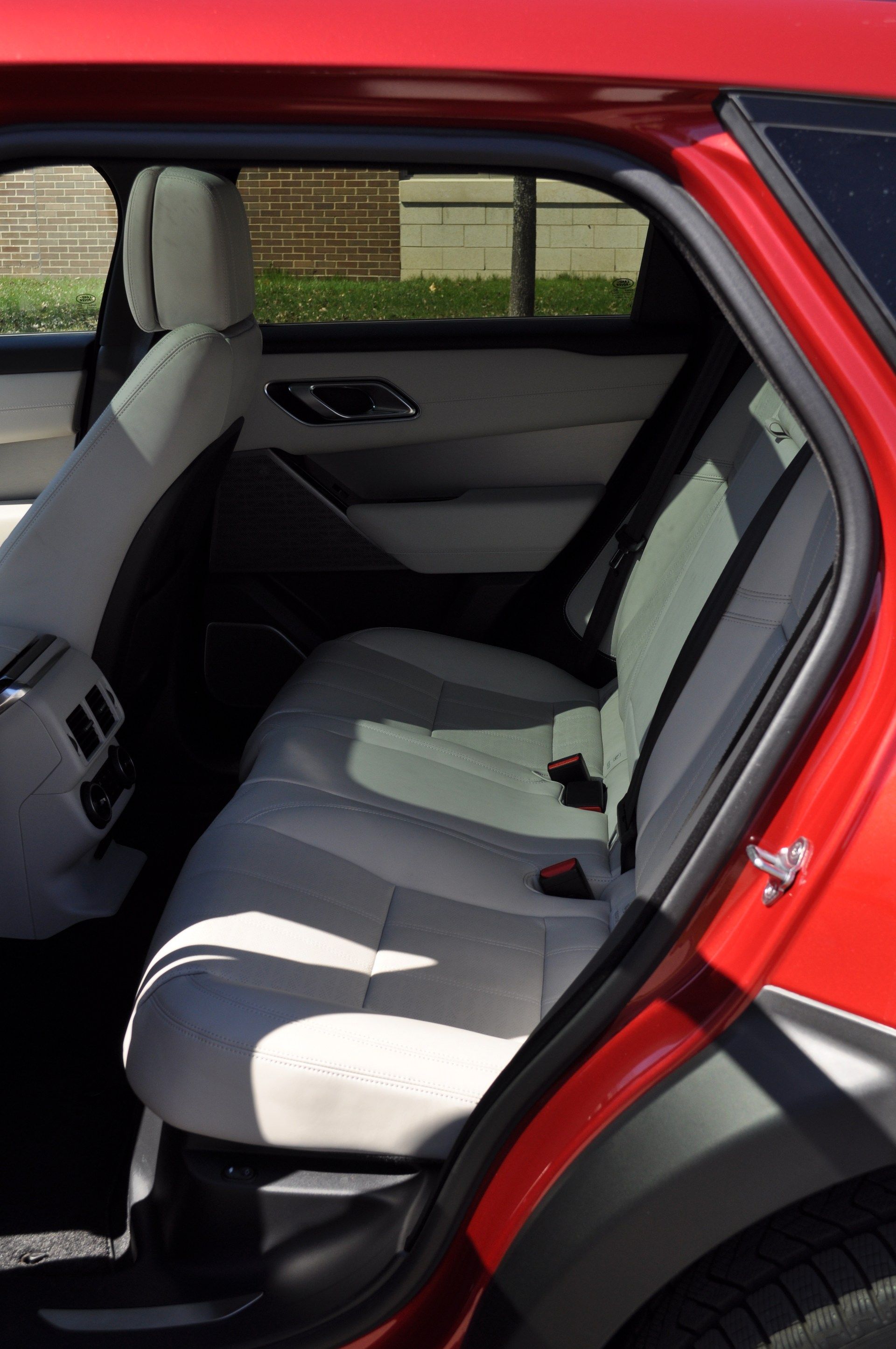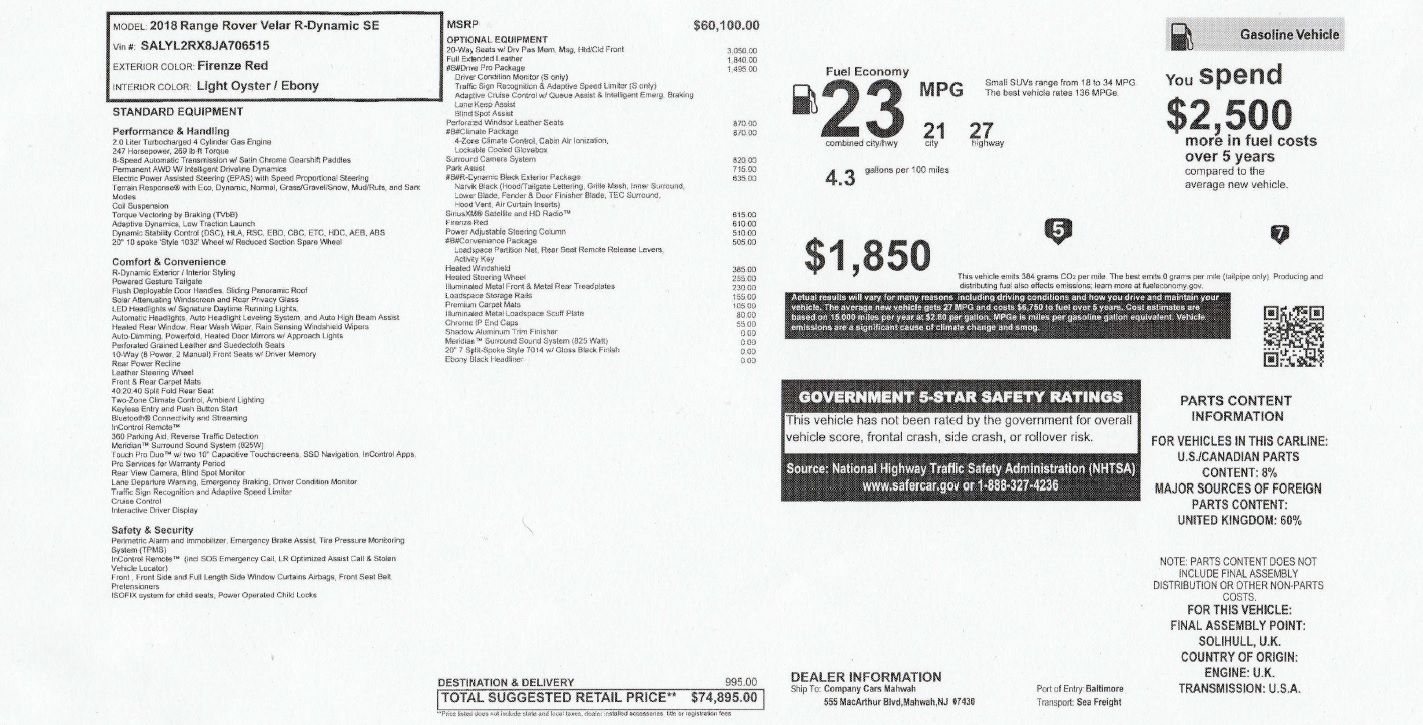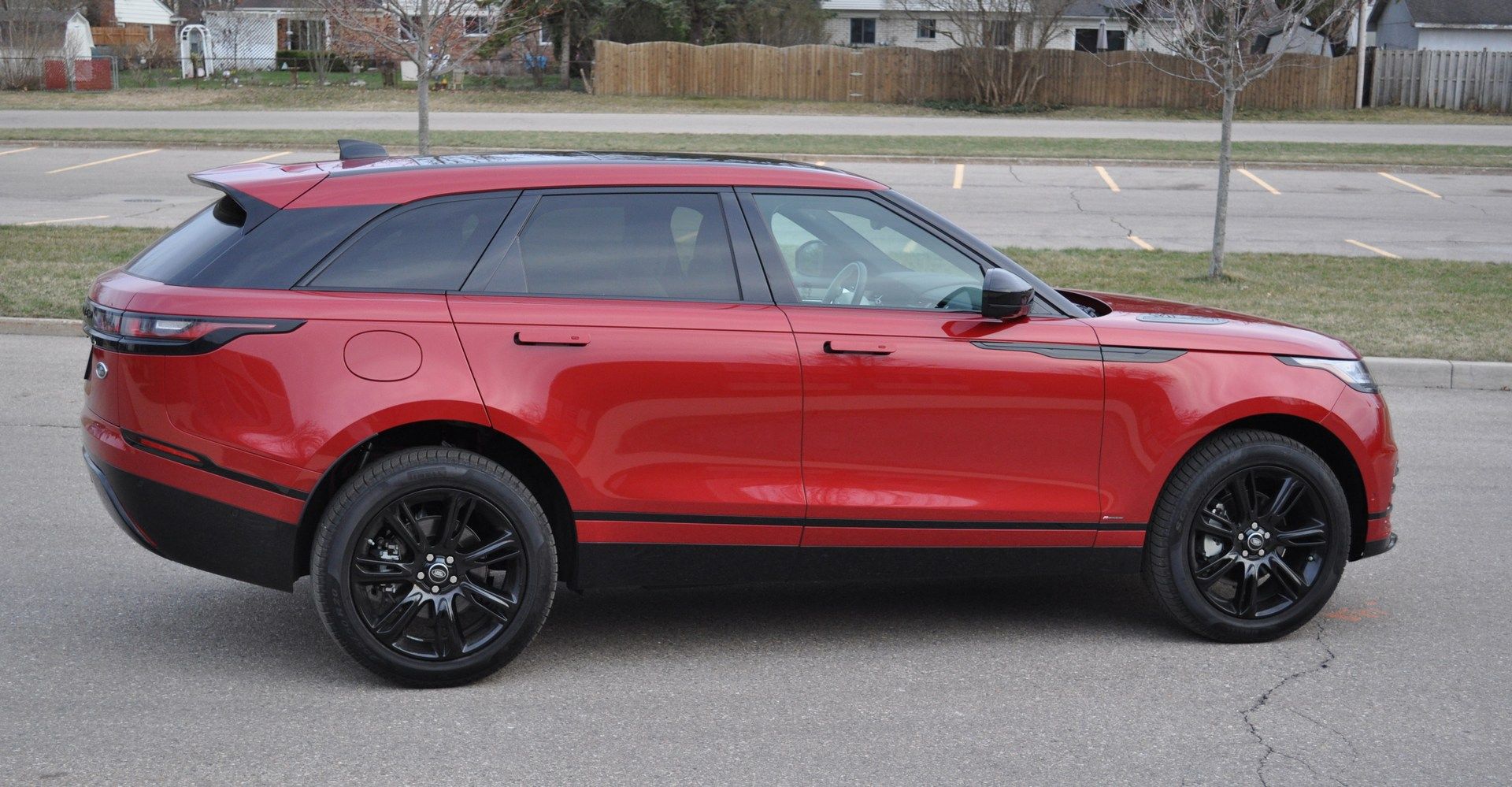The luxury crossover market is booming with new entries and the Range Rover Velar is bound to draw attention thanks to its dramatic good looks and well-appointed interior. We recently spent a week with a Velar R-Dynamic SE and found out that luxury comes at a price.
How does it look?
In a word, phenomenal. Land Rover Design Director Gerry McGovern and his team deserve a lot of credit for creating one of the best looking crossovers on the market. While this is where I would normally say styling is subjective, it’s hard to argue about the Velar as it has already walked away with a number of awards including the 2018 World Car Design of the Year.
The Velar R-Dynamic SE isn’t exactly what I would order, but the model still gets plenty of attention thanks to its Firenze Red exterior that contrasts with the R-Dynamic Black Exterior Package. The model also rides on a set of 20-inch wheels with a gloss black finish, which nicely completes the two-tone design. Perhaps one of the Velar’s most understated components is its pair of truly impressive LED headlights. Not only do they give the model a menacing appearance at night, they also provide tons of illumination.
Unfortunately, the stylish design isn’t without its drawbacks as rearward visibility is compromised by small rear windows and thick pillars. The Velar’s high beltline also makes using an ATM a bit of a gymnastics act.
This is how luxury should feel
The upscale design carries over to the cabin, where drivers find themselves surrounded by high-quality materials and a number of high-tech features. Part of this luxury feeling is due to the Velar’s numerous options which pushed the as tested price to $74,895. Among the interior options are 20-way power front seats with heating, ventilation and massage functions ($3,050), full extended leather ($1,840) and perforated Windsor leather seats ($870). With all this, the Velar is truly impressive as virtually everything you touch is either leather, high quality plastic or a digital screen.
The front seats are on the firm side but they offer a multitude of adjustments, which makes finding a comfortable position a breeze. The rear seats are also nice and offer 37.2 inches (94.4 cm) of legroom. However, that number is a bit deceiving as it can still be a tight fit unless front occupants are willing to move their seats forward a bit. Even then, rear seat passengers have could have their knees touching some hard black plastic.
Of course, everything isn’t terrible back there as all seating positions offer plenty of headroom. Rear passengers also have a handful of amenities including four air vents, a 12-volt outlet and individual climate controls on models equipped with the $870 Climate Package.
The rear luggage compartment is pretty accommodating as it holds 34.4 cubic feet (974 liters) of cargo. That can be increased to 70.1 cubic feet (1,985 liters) when the rear seats are folded down.
Three screens done right
One of the Velar’s defining interior features is the Touch Pro Duo system which consists of two 10-inch displays. The upper display is a traditional touchscreen infotainment system, while the lower touchscreen display is used to adjust the climate control settings, seats and drive mode.
The dual display setup is rather intuitive and most users will only need to use a handful of menus after the initial setup. The lower display, in particular, rarely needs to be used as there are dedicated control knobs to easily adjust the cabin temperature. The knobs can be pushed down to turn them into controls for the heated and ventilated seats – simply turn the knob left to adjust the level of ventilation or turn the knob right to adjust the level of heating.
Thanks to this dual purpose setup, drivers only need to enter the seat menu to select which type of massage they would like. There are several different options and each offers different levels of intensity.
The infotainment system is also rather intuitive, but the small icons at the bottom of the screen can be hard to select when driving. However, the home button can be used to pull up a multi-panel screen that shows an overview of the audio, phone and navigation menus. Thankfully, Land Rover also installed dedicated volume controls on the steering wheel and at the base of the lower display.
The 12.3-inch digital instrument cluster offers impressive resolution and a number of customization options including turning the display into a map. Even in the traditional mode, the display works well with the navigation system as directions will automatically pop up in the instrument cluster when needed.
Impressive Technology
The Range Rover Velar can be equipped with an assortment of driver assistance systems, and I’m happy to report they worked well during our week long test drive. One of the stand out features is the adaptive cruise control system which can automatically adjust the Velar’s speed to match the vehicle in front of it. This turns the model into a perfect highway cruiser as the Velar keeps a set distance from the vehicle ahead and then speeds up or slows down depending on the flow of traffic. I didn’t encounter any traffic jams on the highway, so I didn’t get a chance to check out the system’s Queue Assist function.
While I mentioned the Velar’s poor rearward visibility earlier, it’s not that much of an issue on the highway. With properly adjusted mirrors and the Blind Spot Assist system, drivers can feel pretty confident that they’re not to going to accidentally change lanes at the wrong time.
Speaking about not hitting things, the Velar’s Lane Departure Warning system will subtly warn drivers if they cross lane markings by vibrating the steering wheel and showing a visual display in the instrument cluster. Unlike systems in other models, the Lane Departure Warning system in the Velar is fairly accurate and won’t alert drivers unless there’s actually a problem. If the driver fails to respond to the warnings, the Lane Keep Assist function can apply a small amount of counter steering to keep the vehicle in its intended lane.
Everything’s not perfect, though, as the Autonomous Emergency Braking system has a tendency to be a little too vigilant and warn you about vehicles that are turning out of your path and don’t pose a risk. Thankfully, this doesn’t trigger automatic braking unless it determines a collision is imminent.
The Velar’s voice recognition system is also relatively limited to a few specific commands. This problem isn’t unique to the Velar, but it’s frustrating as many consumers have become accustomed to voice assistants such as Amazon Alexa and Google Assistant.
So how does it drive?
Despite the sporty styling, the Velar’s driving experience is more geared towards comfort. On Michigan’s pothole covered roads, the Velar performed admirably as the ride remained comfortable and composed. Road imperfections are felt in the cabin but they’re never too harsh or jarring. Part of this is due to the Velar’s Adaptive Dynamics system which monitors body and wheel movement hundreds of times per second. The system continuously adjusts the damping forces to ensure the suspension is optimized for current driving conditions.
The steering feels a bit relaxed but it’s predictable for the most part. The same can be said for the brakes, which have to deal with the Velar’s 4,217 lb (1,912 kg) curb weight. The company offers upgraded front brakes for an additional $510 and we’d probably tick that box, but they’re by no means necessary.
The Velar’s eight-speed automatic transmission is well-suited for the task at hand and shifts are smooth and precise. The Velar also offers an assortment of different driving modes, however I usually defaulted to Comfort mode as it doesn’t the limitations of Eco mode. The company also offers a Dynamic mode but it doesn’t seem to fit the character of the four-cylinder model.
Is the four-cylinder engine up to the task?
The Velar we drove was equipped with a turbocharged 2.0-liter four-cylinder that produces 247 HP (184 kW / 250 PS) and 269 lb-ft (364 Nm) of torque. It is connected to an eight-speed automatic transmission and an all-wheel drive system that enable Range Rover’s SUV to accelerate from 0-60 mph in 6.4 seconds before hitting a top speed of 135 mph (217 km/h).
With figures like that, it’s not surprising that we never had any problems with the Velar’s performance. The model never felt underpowered and we doubt owners would have buyer’s remorse if they got the four-cylinder engine instead of the optional supercharged 3.0-liter V6 which develops 380 hp (283 kW / 385 PS) and 332 lb-ft (450 Nm) of toque.
Sticking with the four-cylinder also has benefits at the pump: the model has an EPA-estimated fuel economy rating of 21 mpg city, 27 mpg highway and 23 mpg combined. Those figures seem completely reasonable as we averaged around 23.4 mpg with a significant portion of highway driving.
If you’re really concerned about fuel efficiency, the Velar can be equipped with a 2.0-liter four-cylinder diesel engine. It develops 180 hp (134 kW / 182 PS) and 317 lb-ft (429 Nm) of torque. This enables the crossover to return 26 mpg city, 30 mpg highway and 28 mpg combined.
Verdict
The Velar has a lot going for it as is stylish, luxurious and comfortable and can also be equipped with an assortment of modern driver assistance systems – plus all the technology seems to work well together. On the other hand, paying $75,000 for a four-cylinder Velar equipped like our test model is a bit hard to swallow. However, pricing starts at a much more reasonable $49,900 and you can order a well-equipped Velar S for around $65,000.
We’ll have a little bit more to say about the Velar in the follow up to our Ask Us Anything post, so stay tuned.




